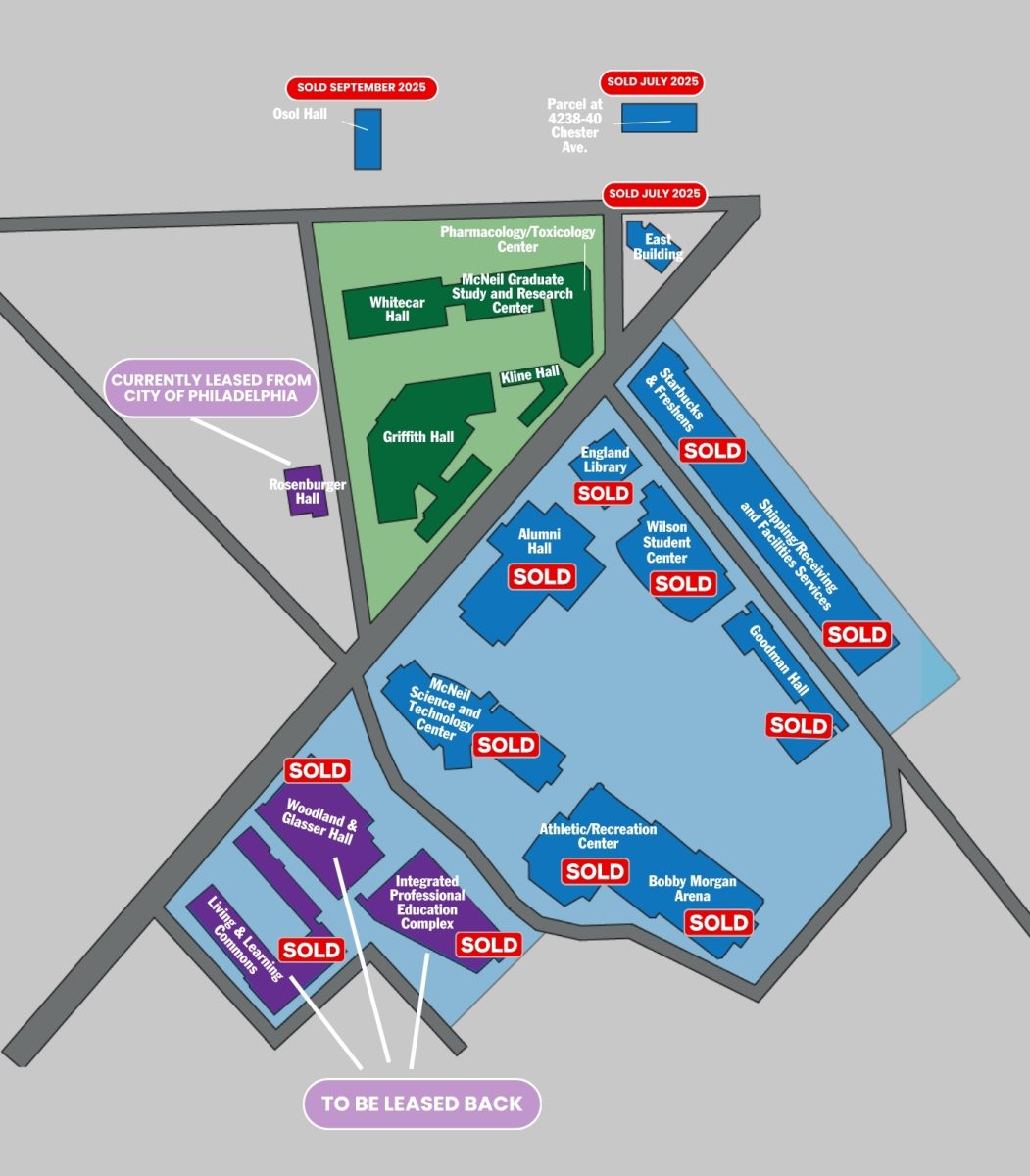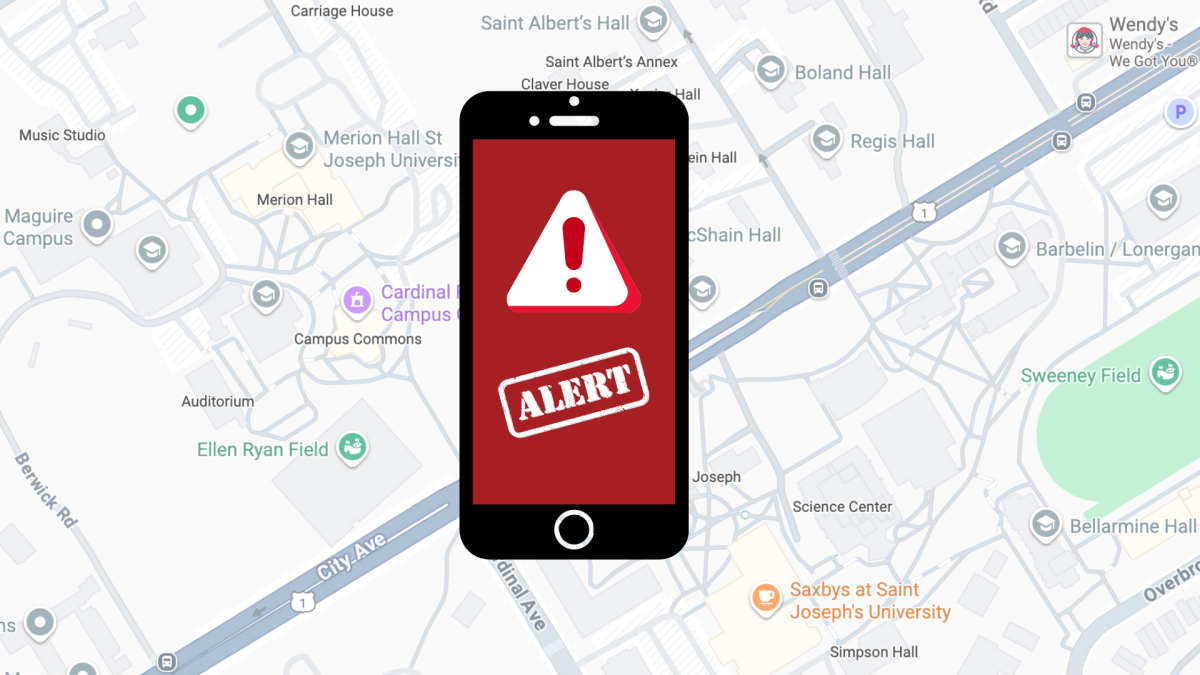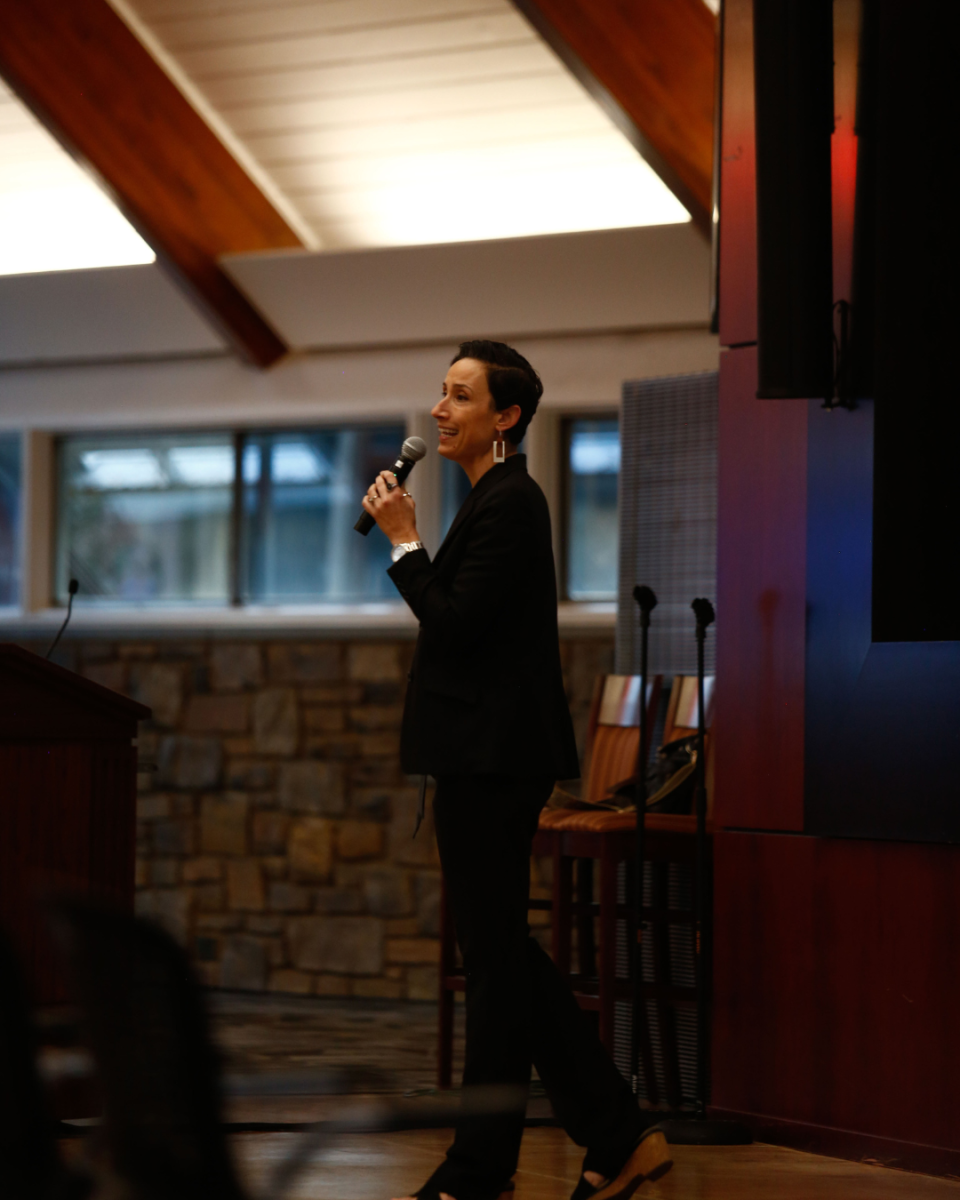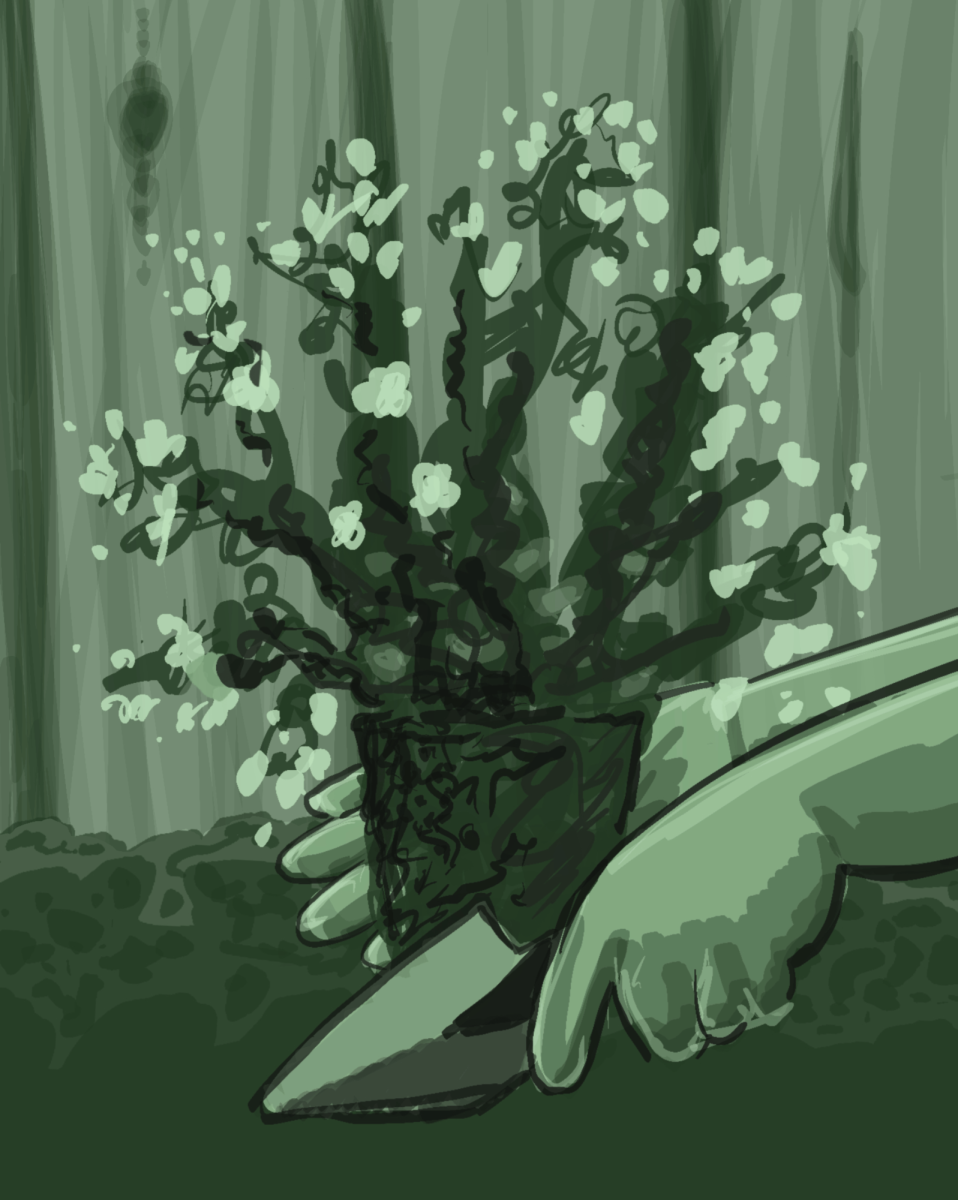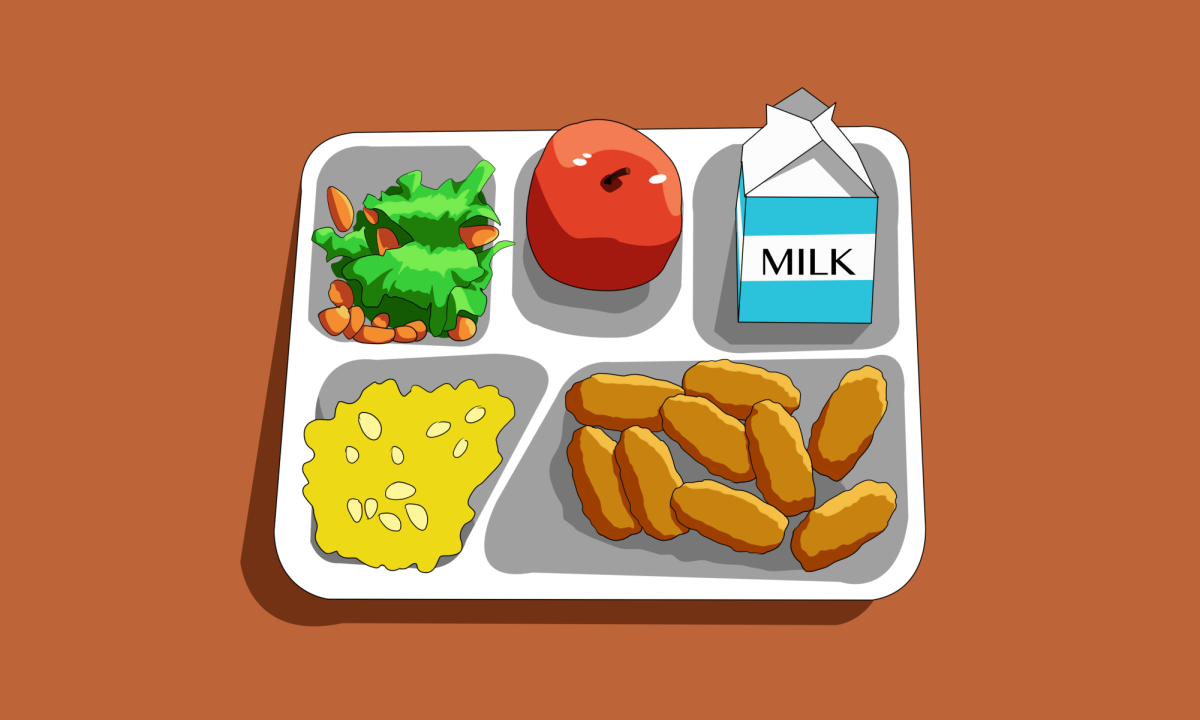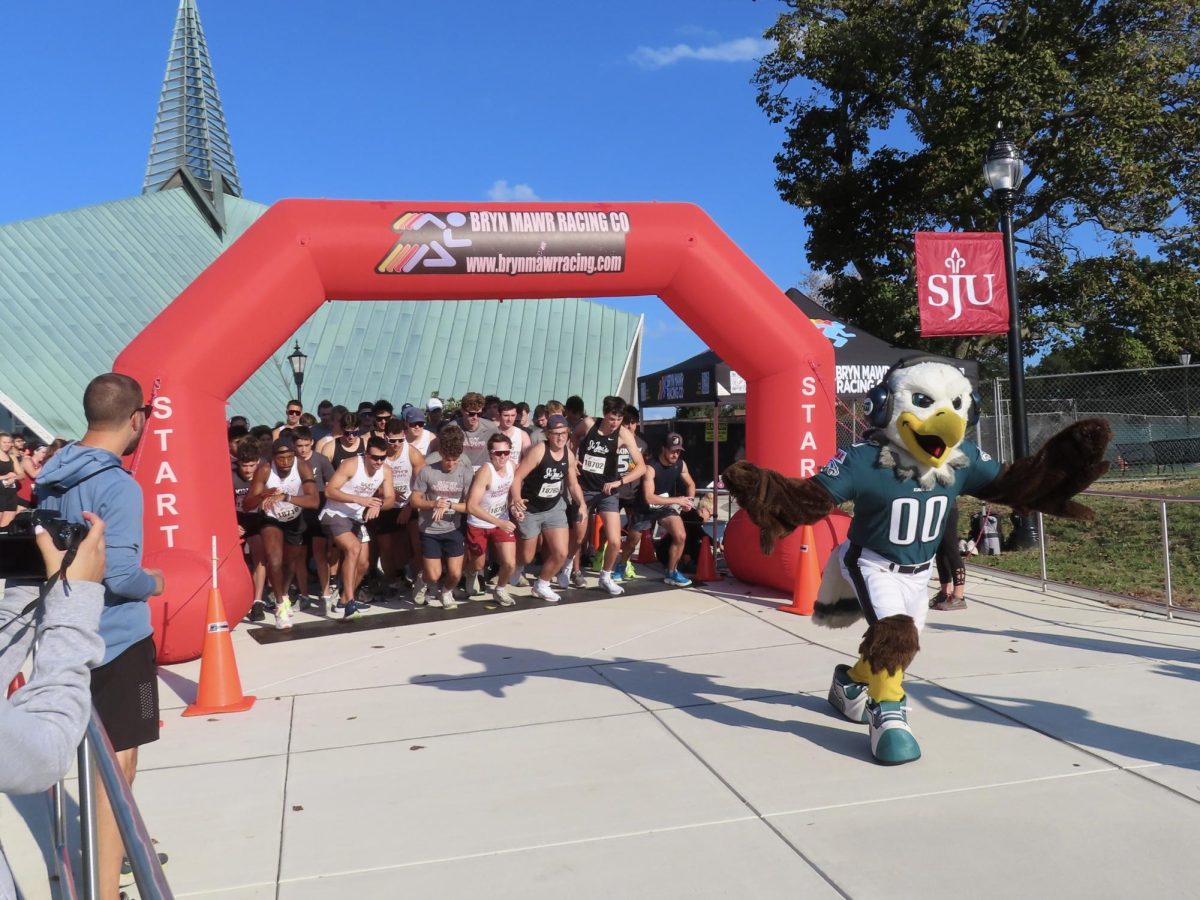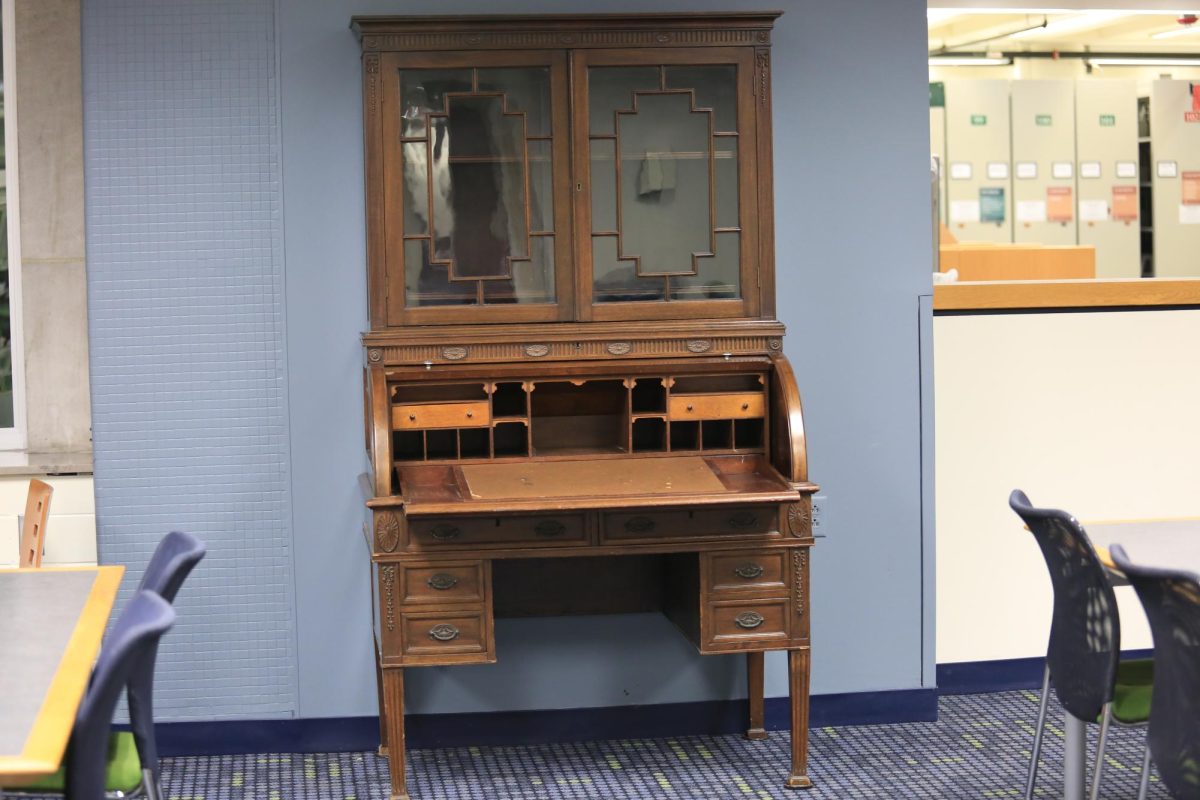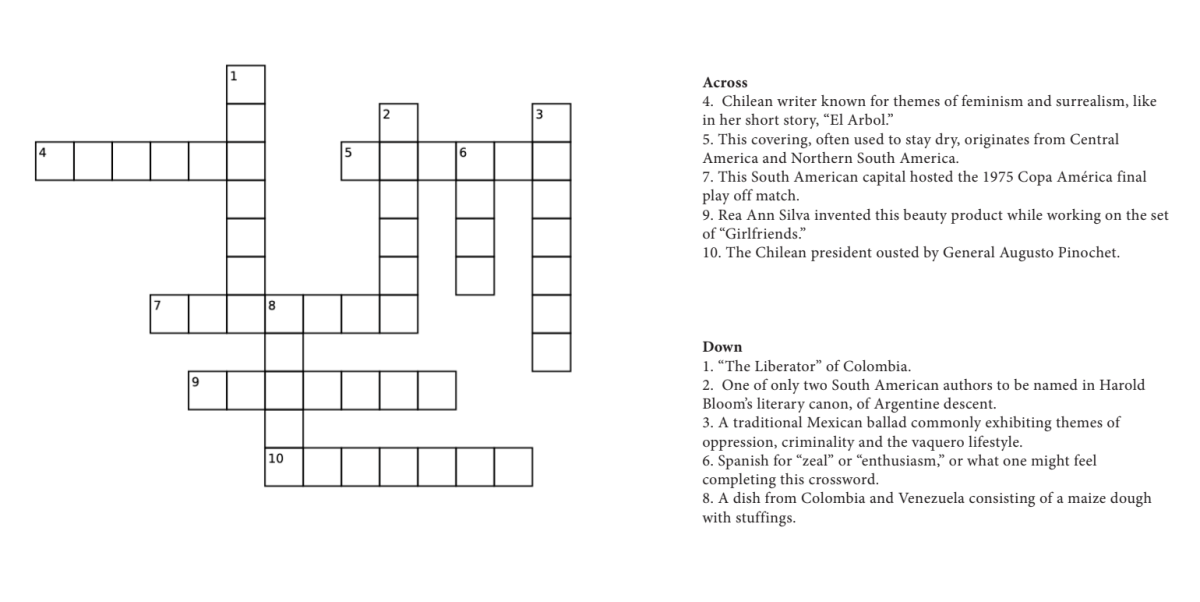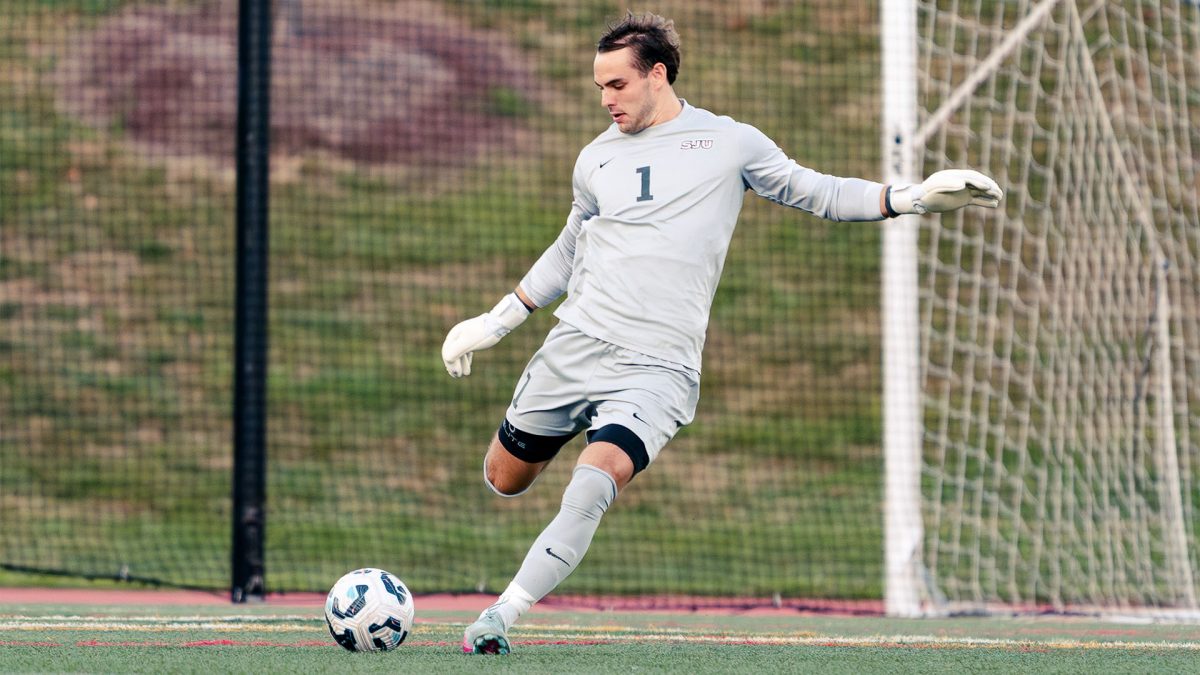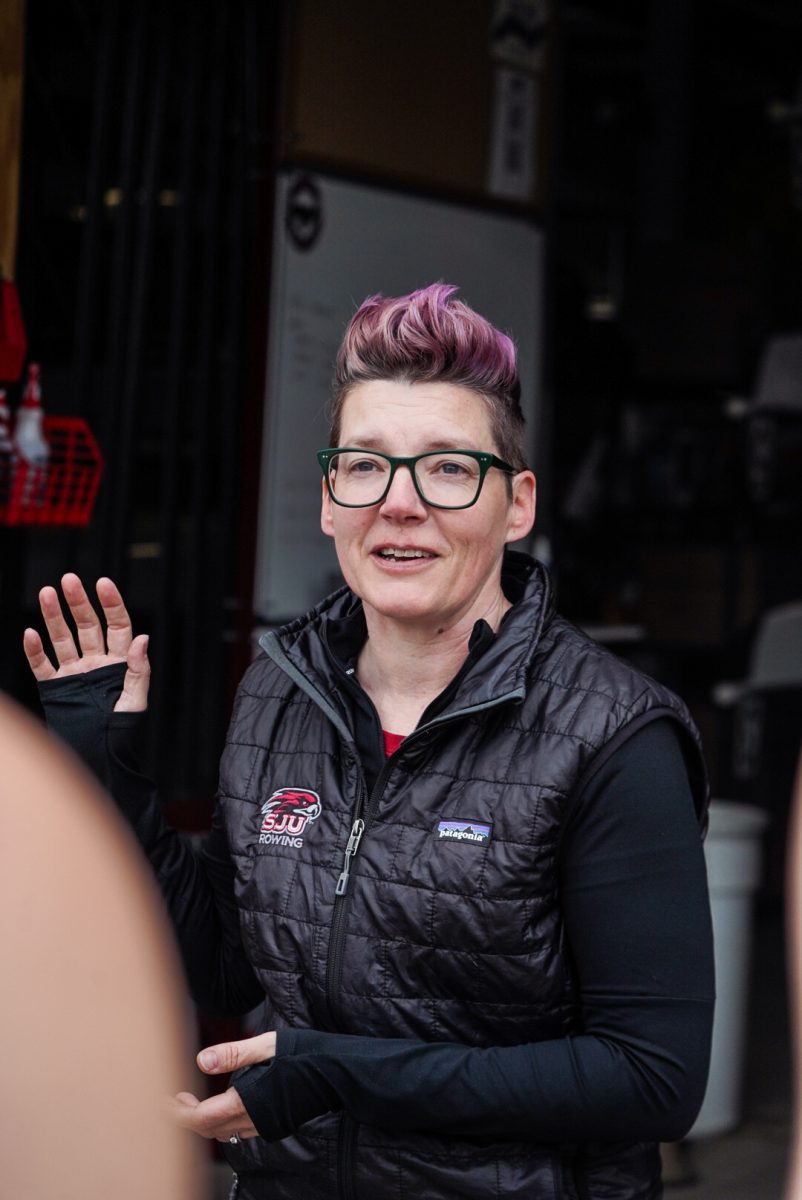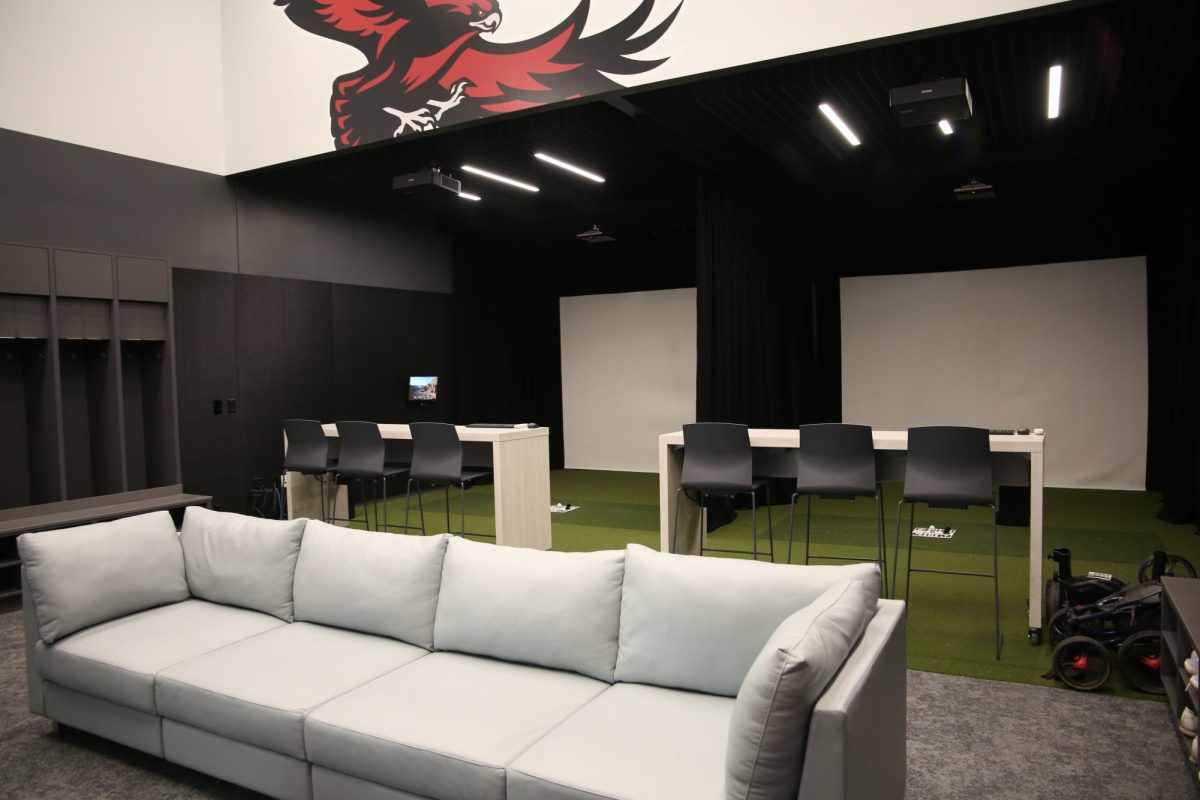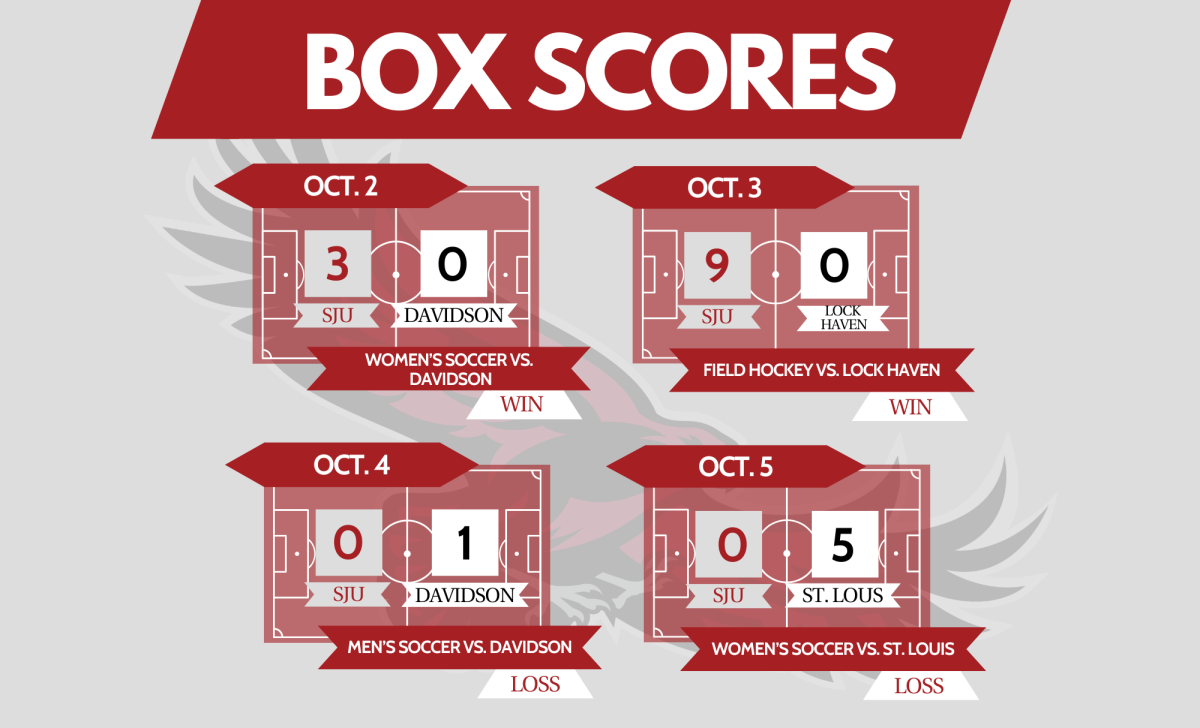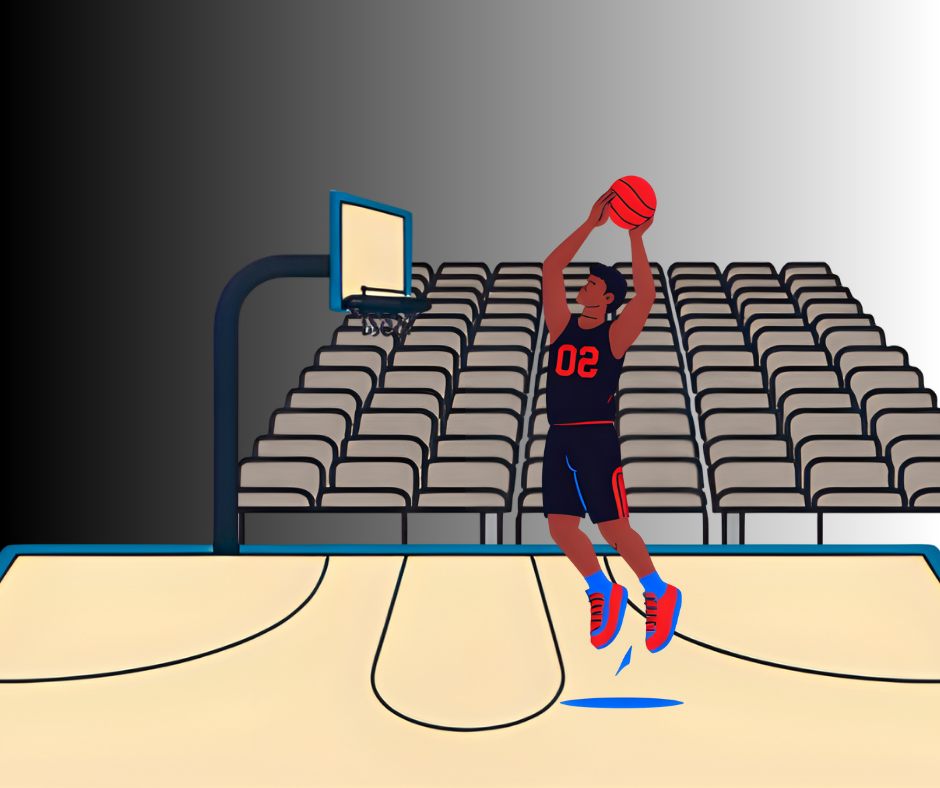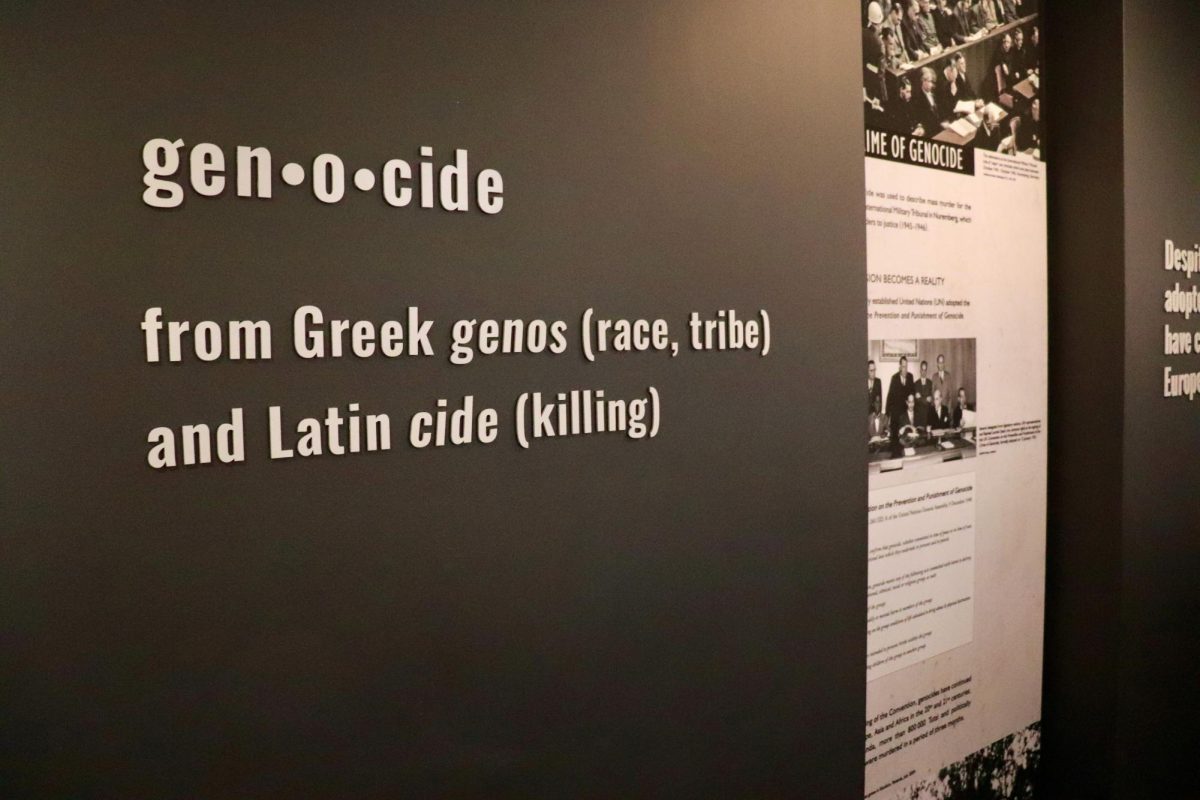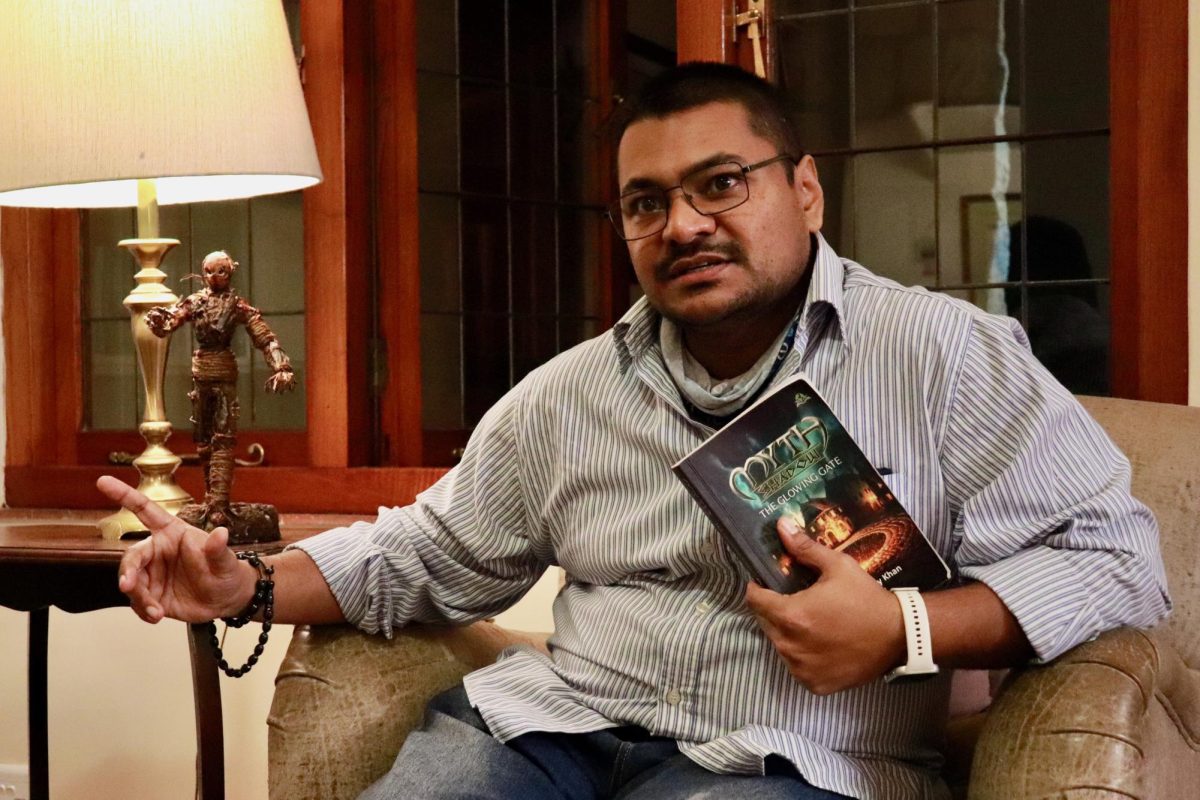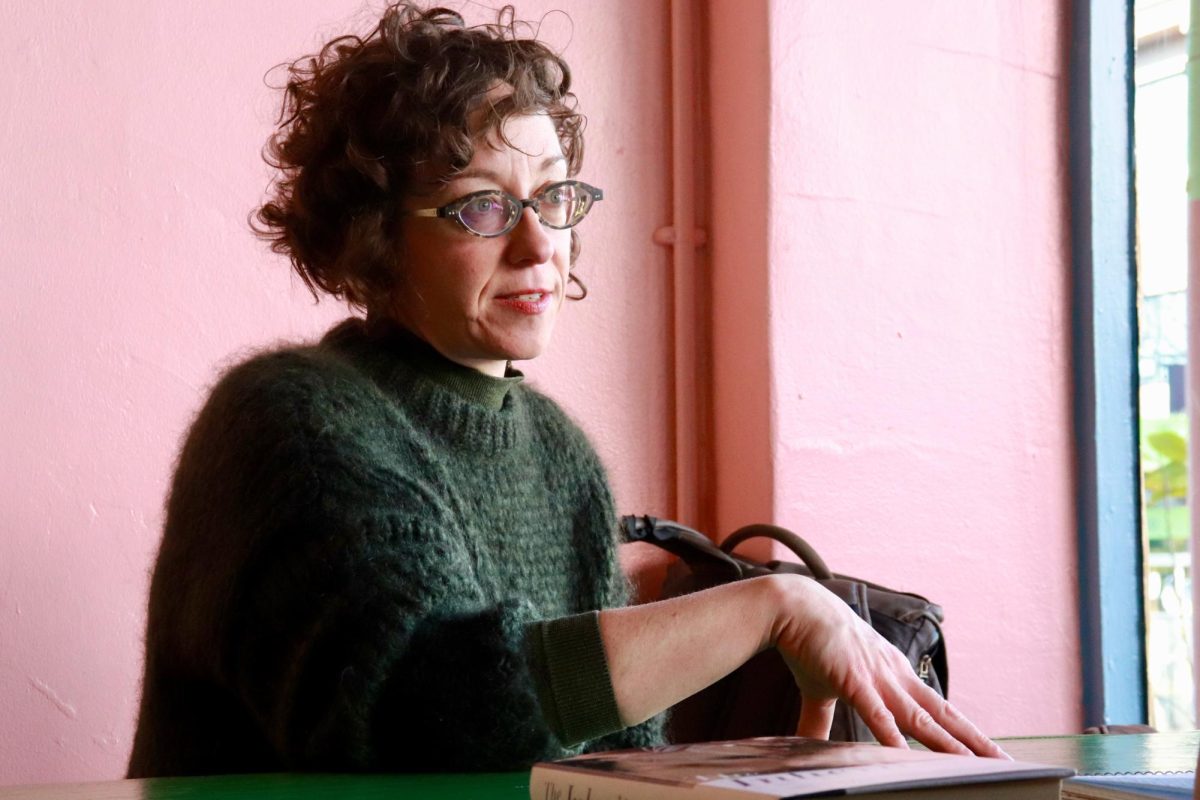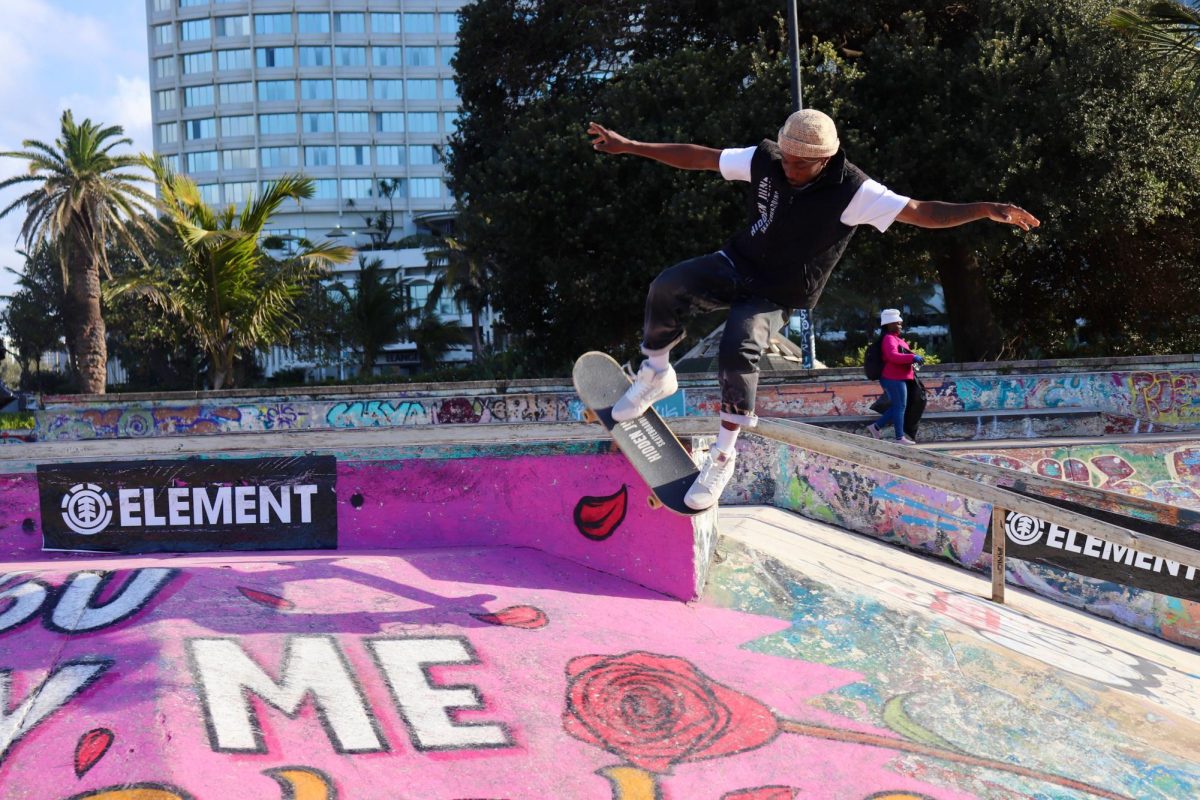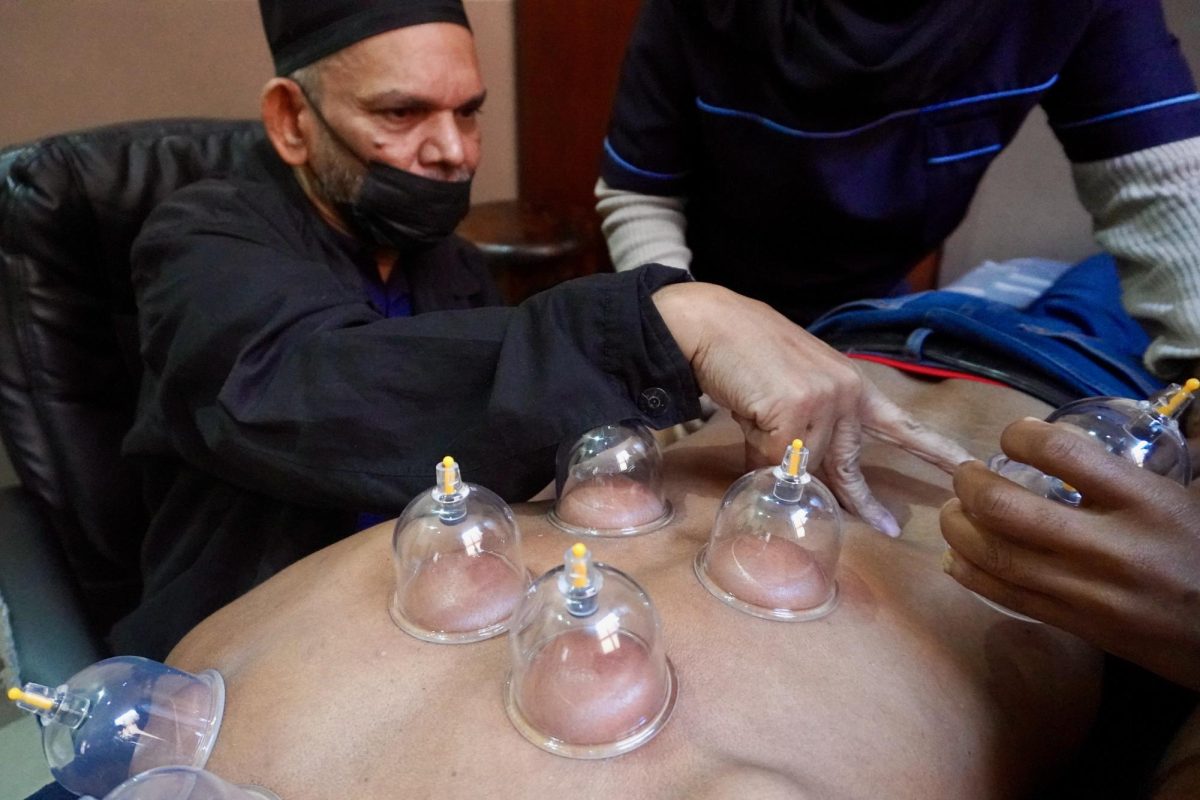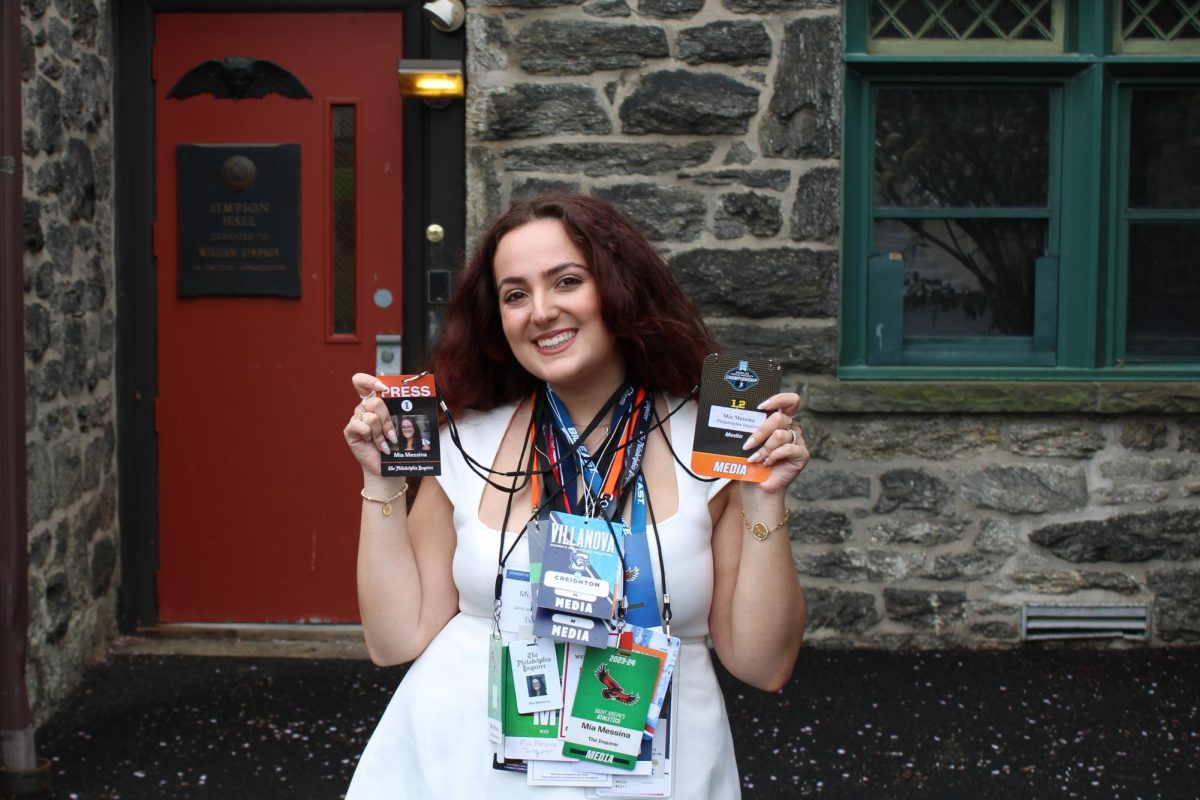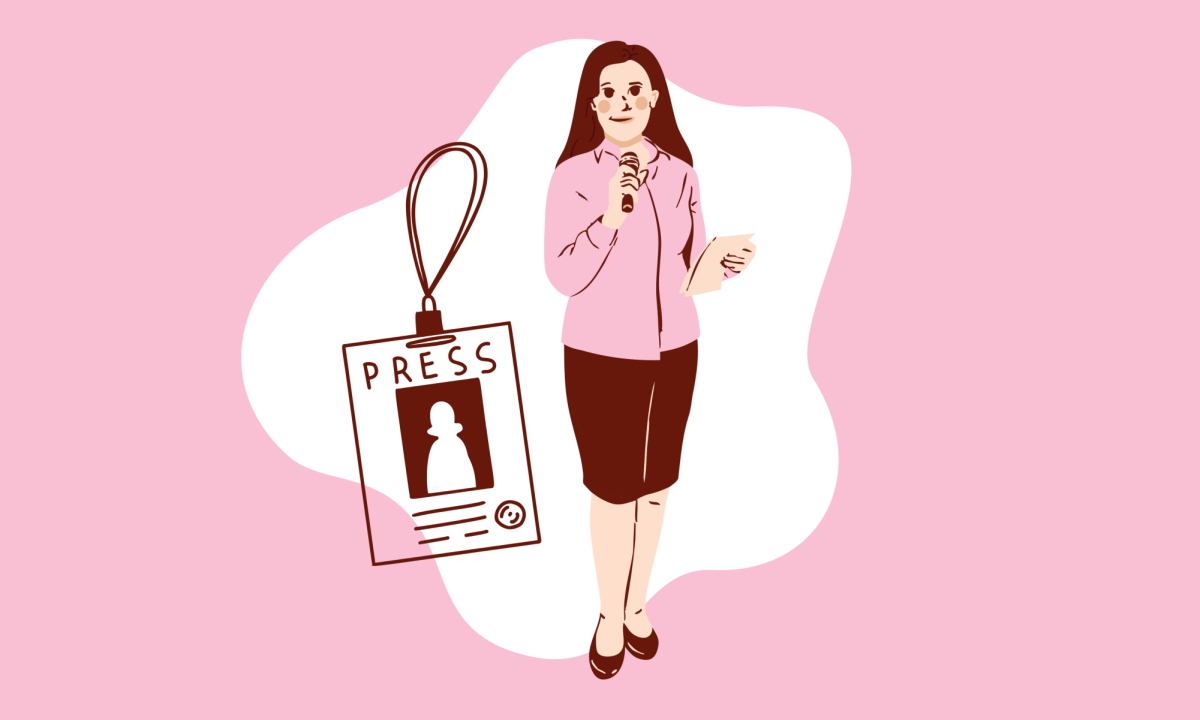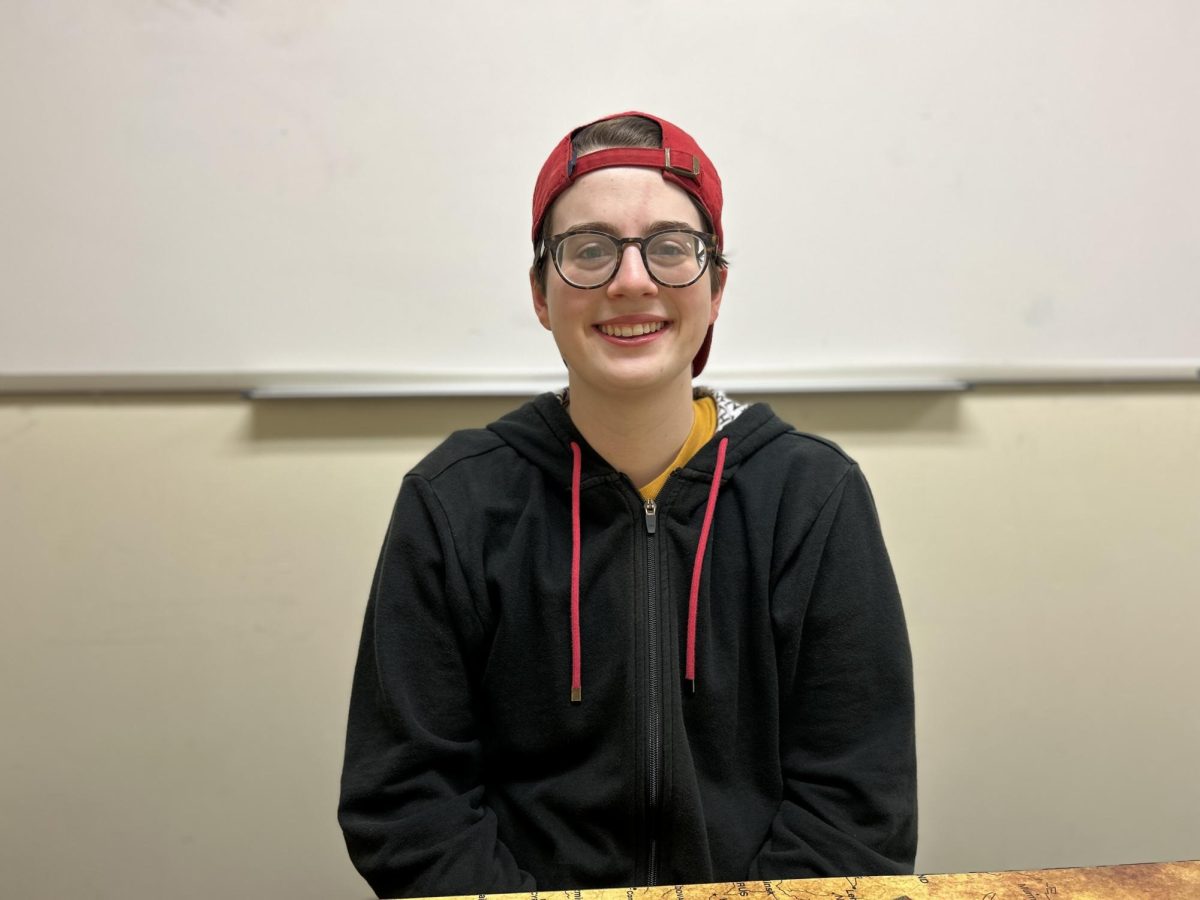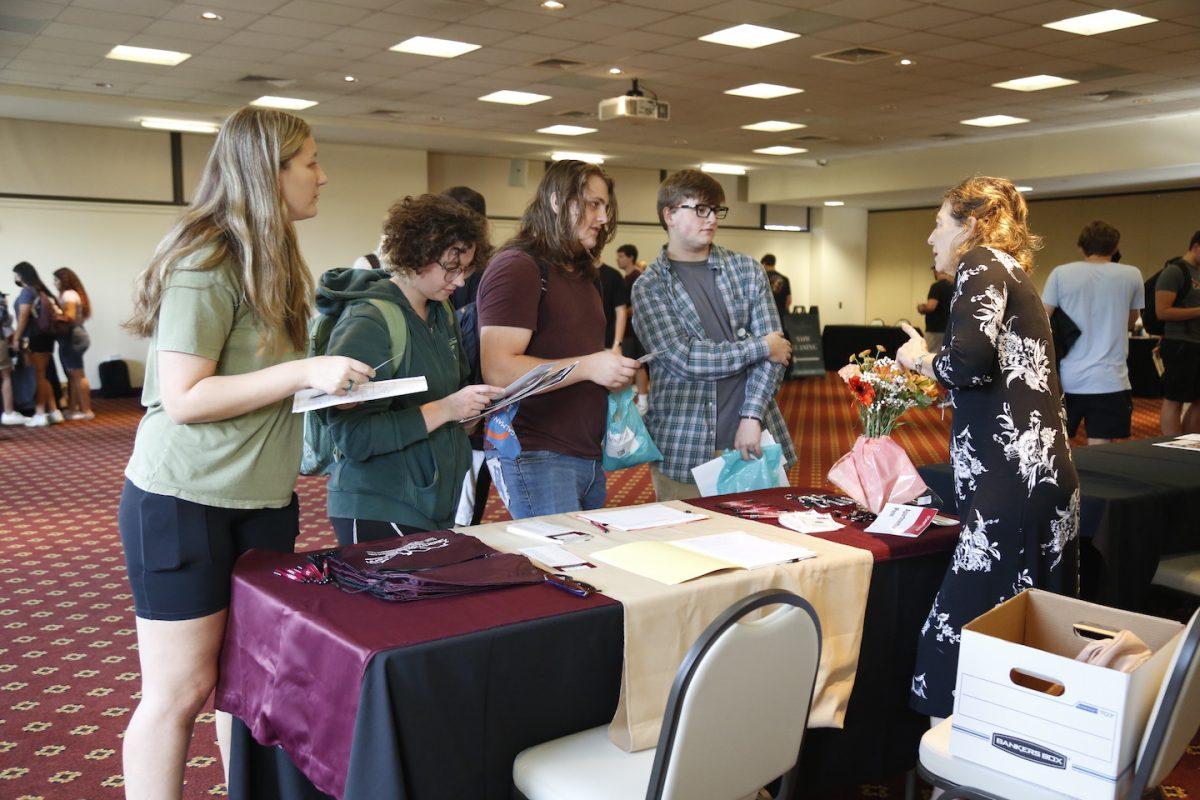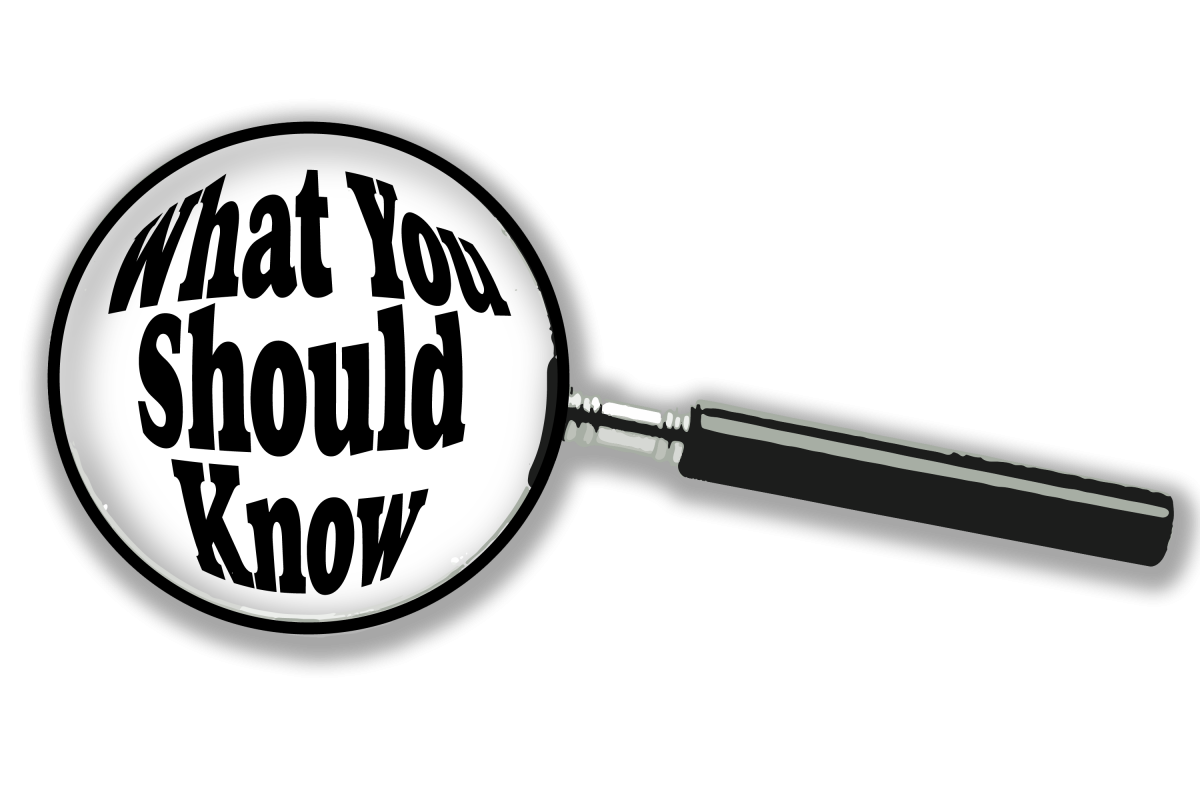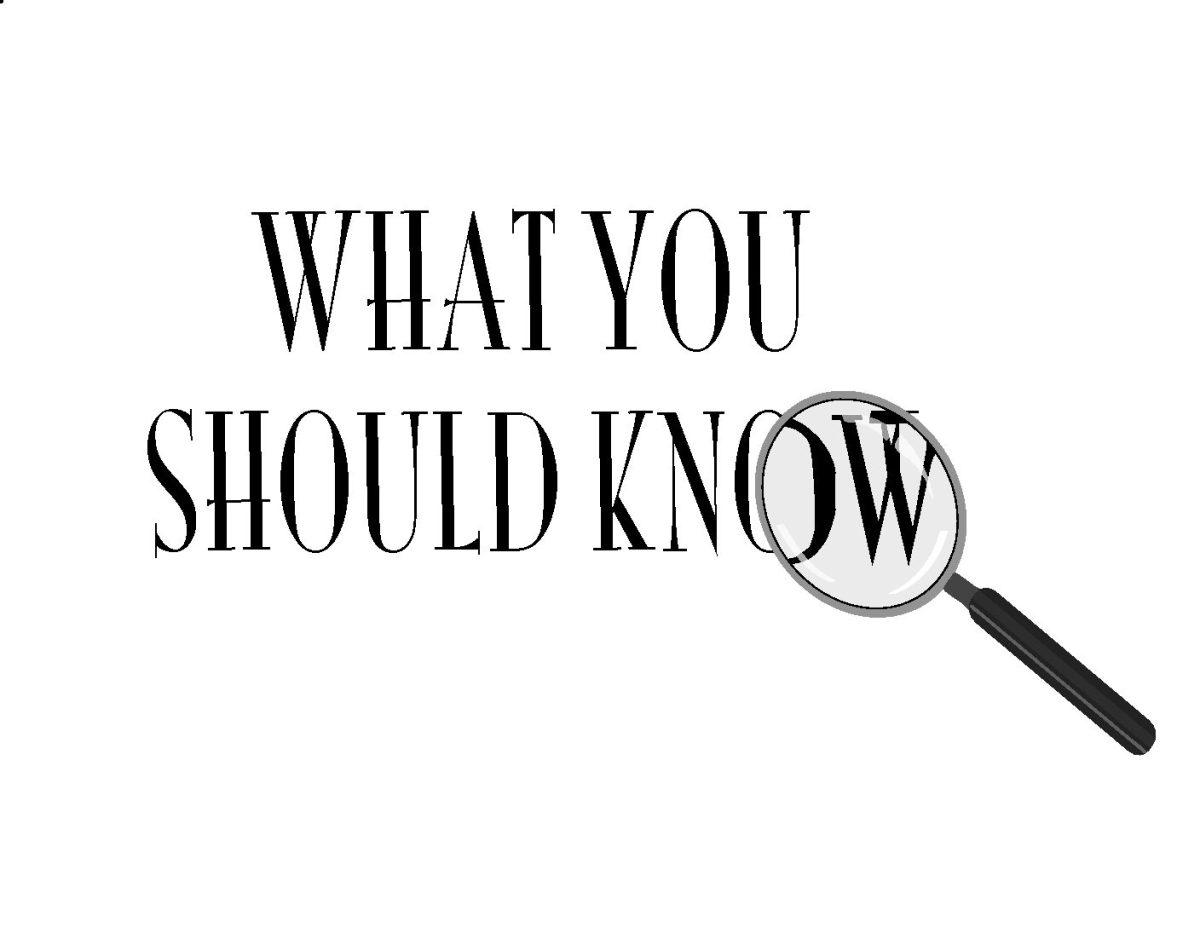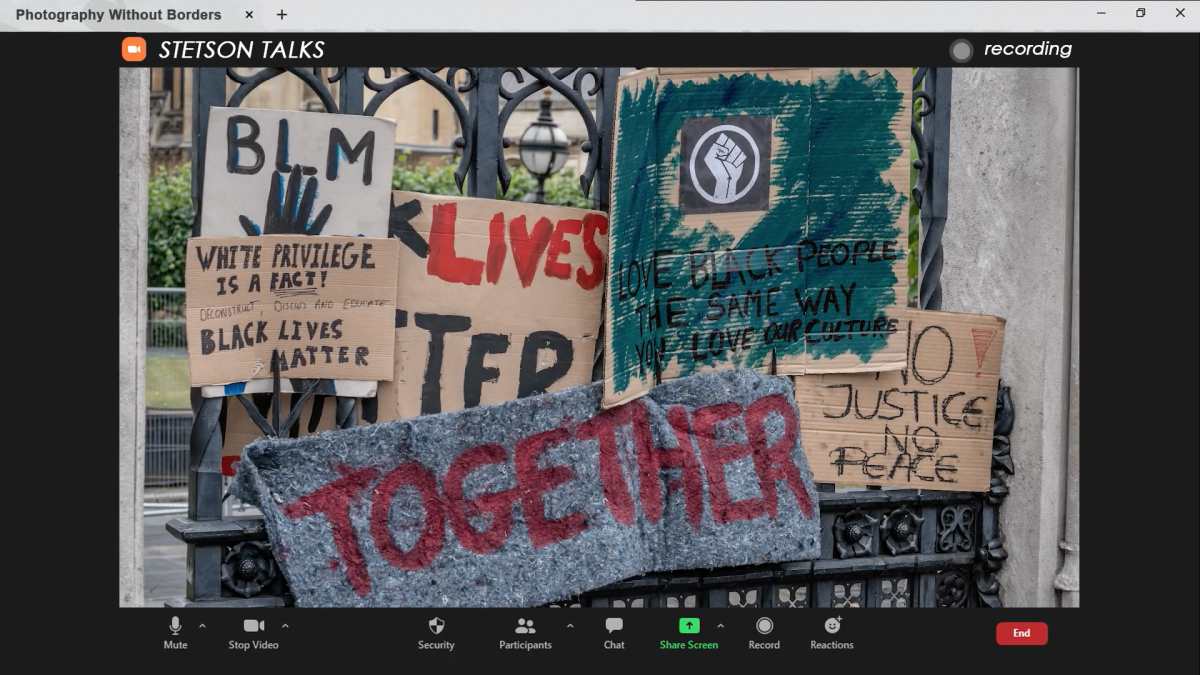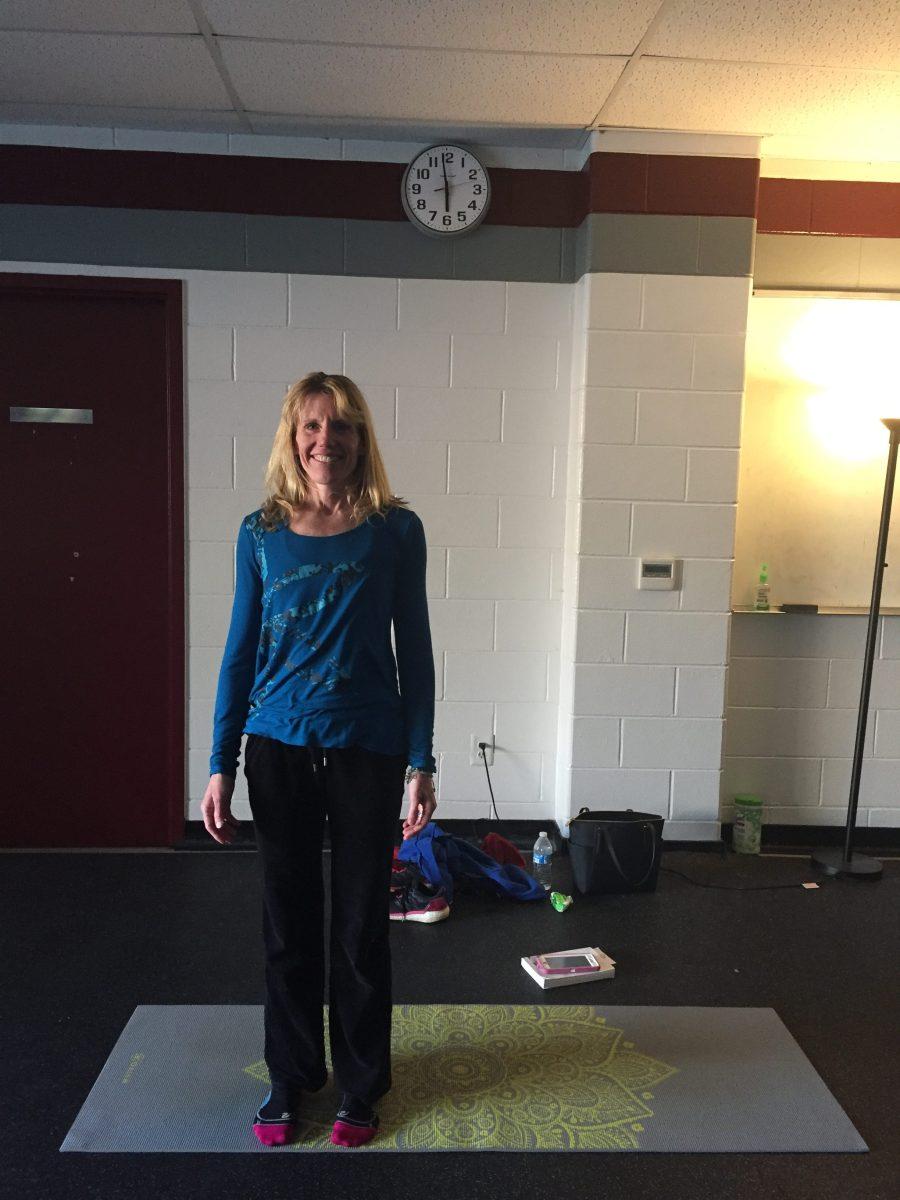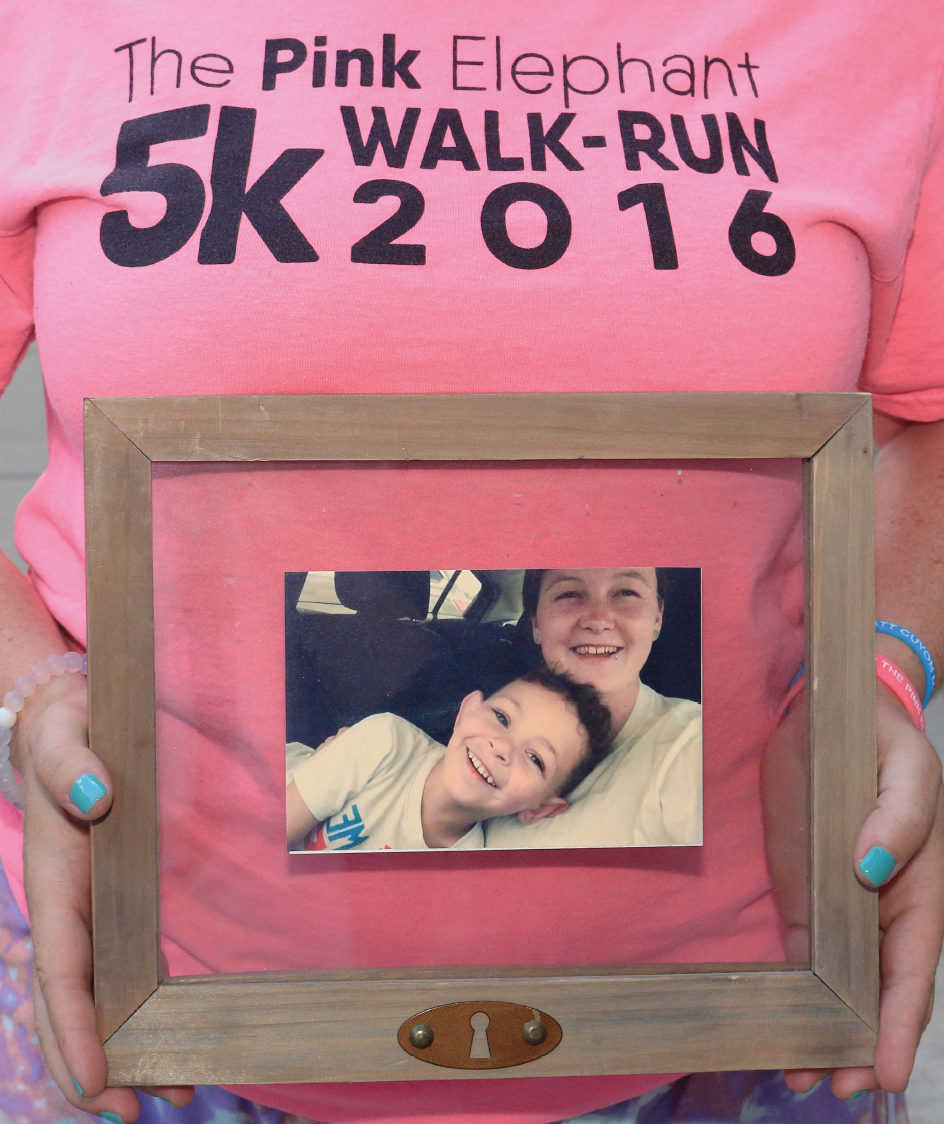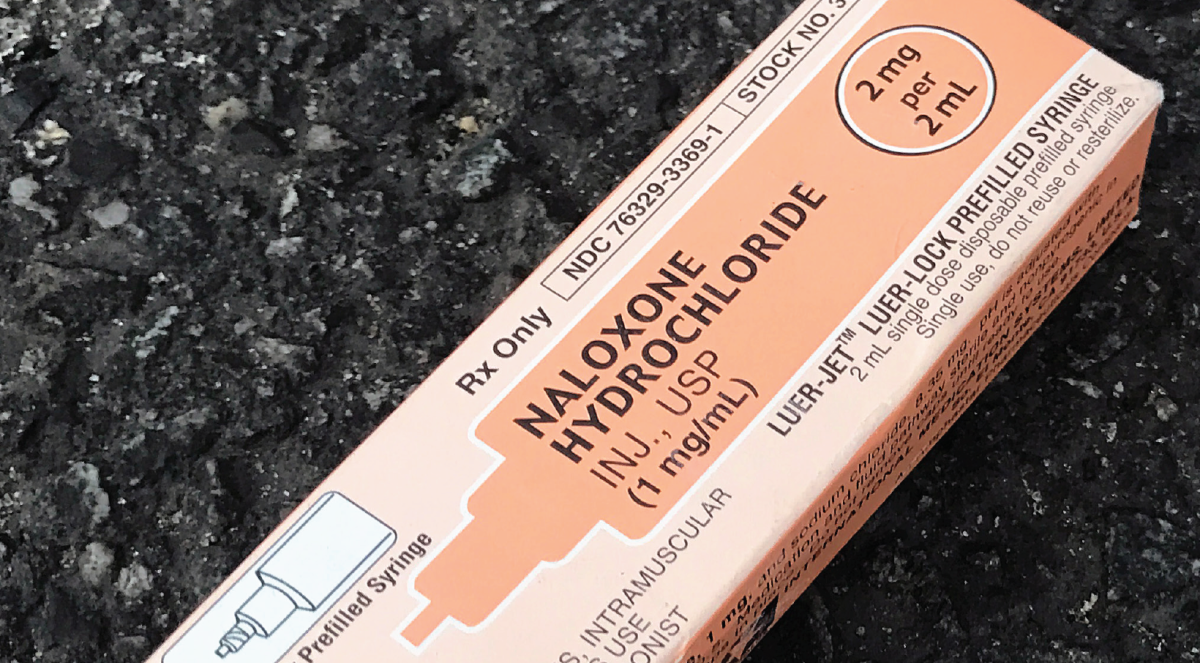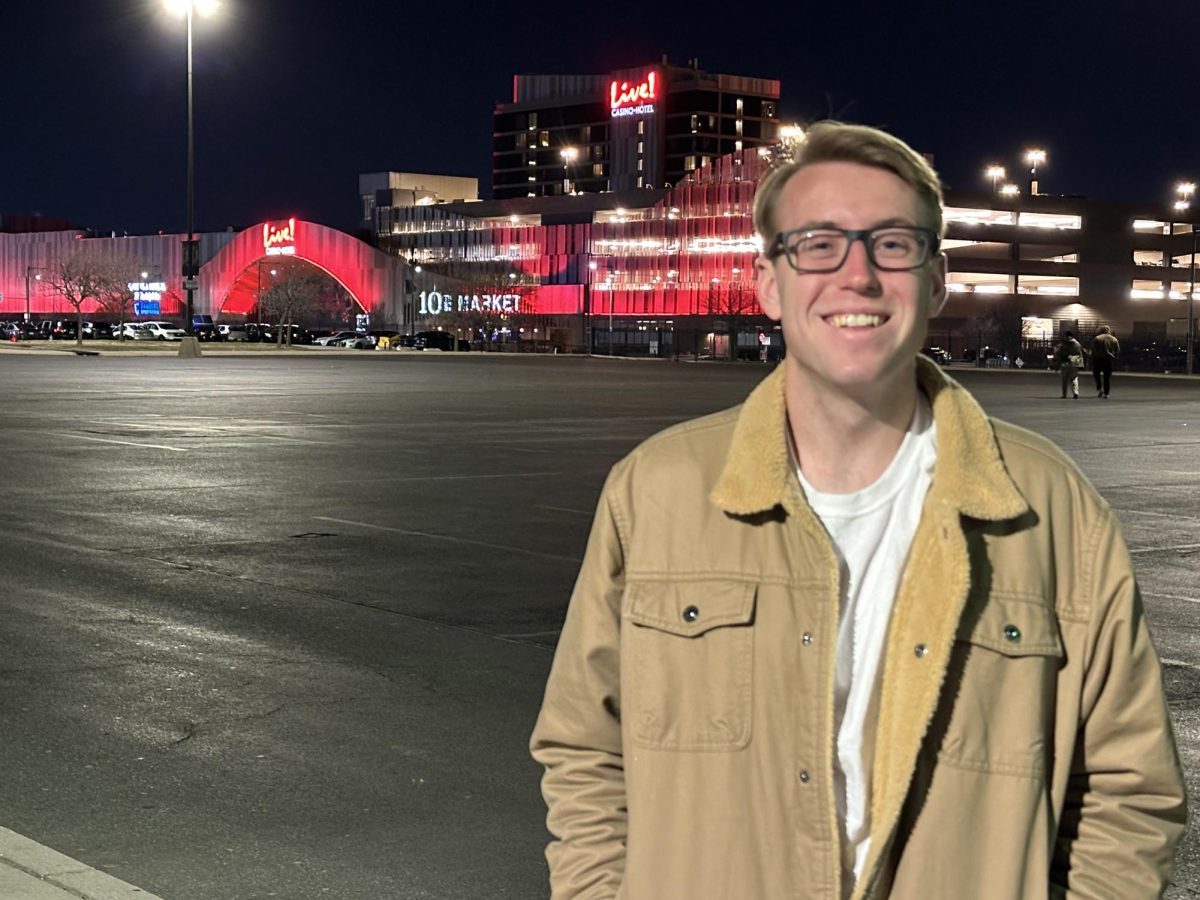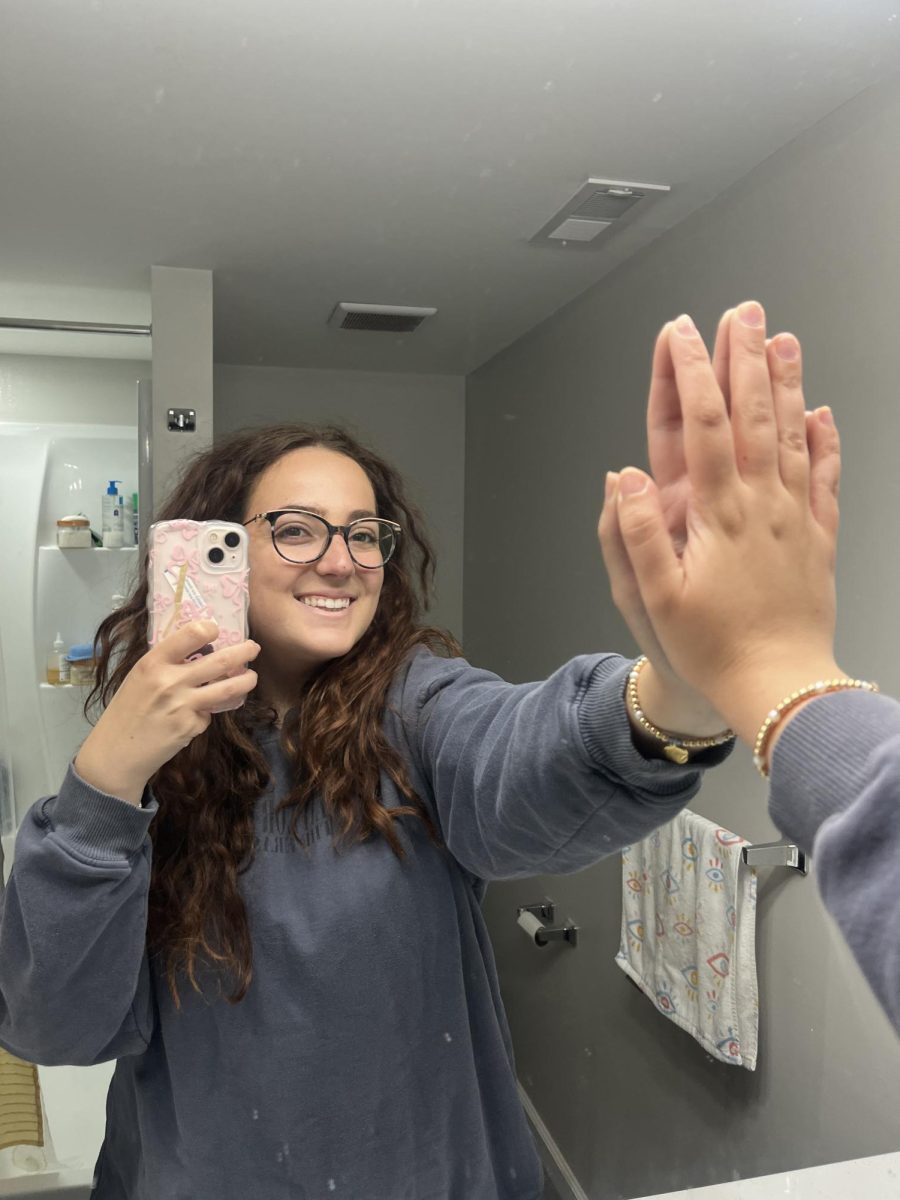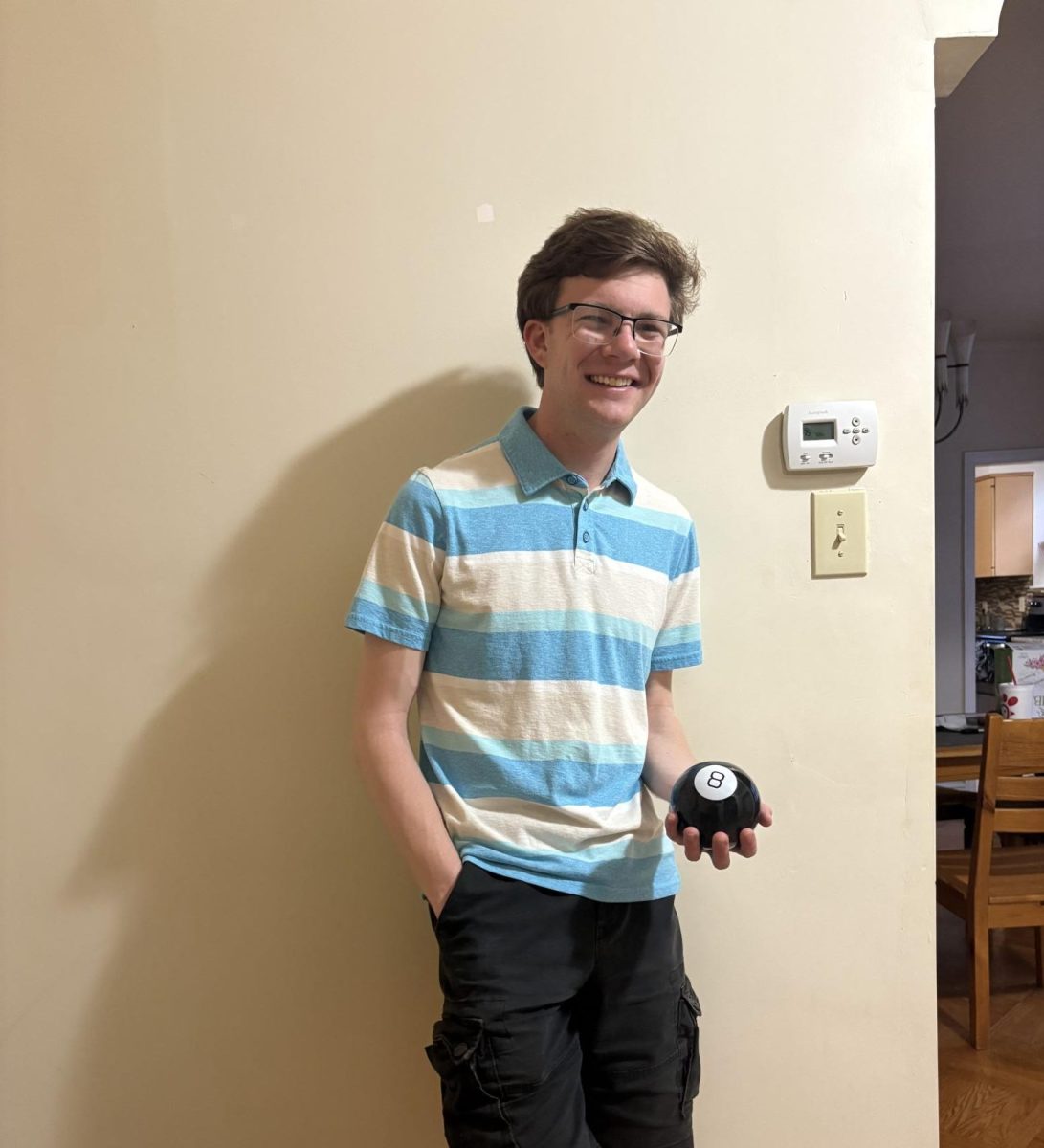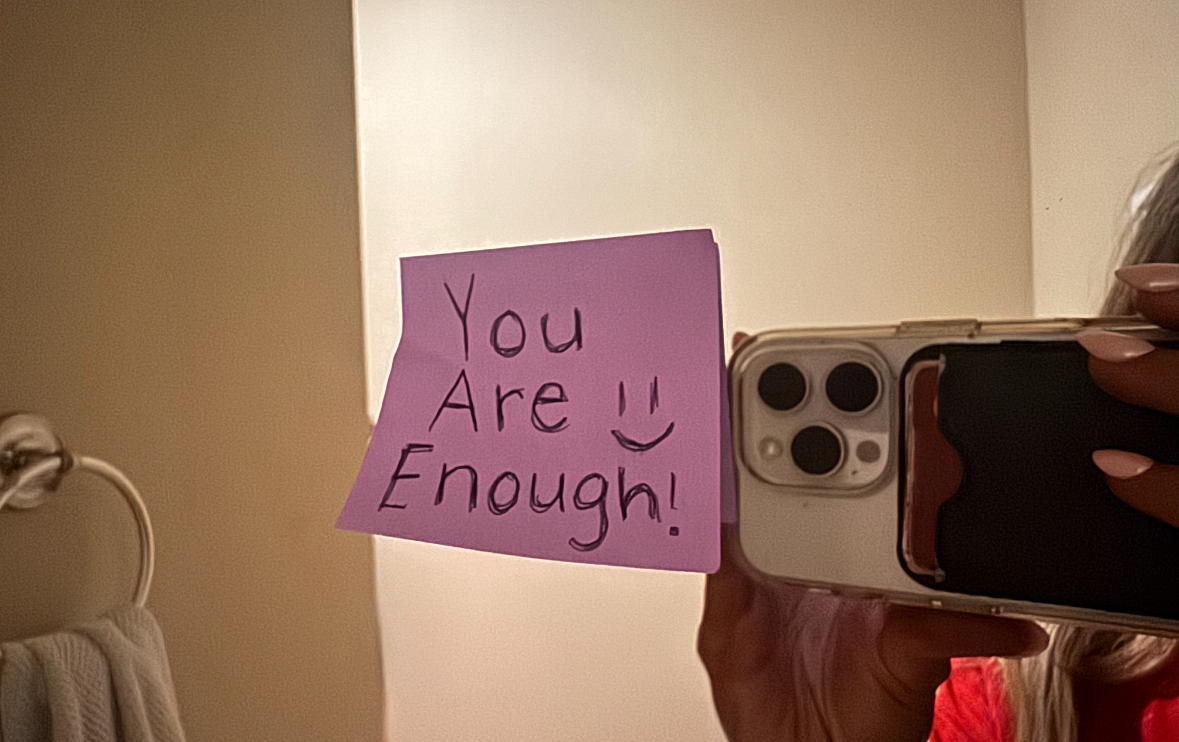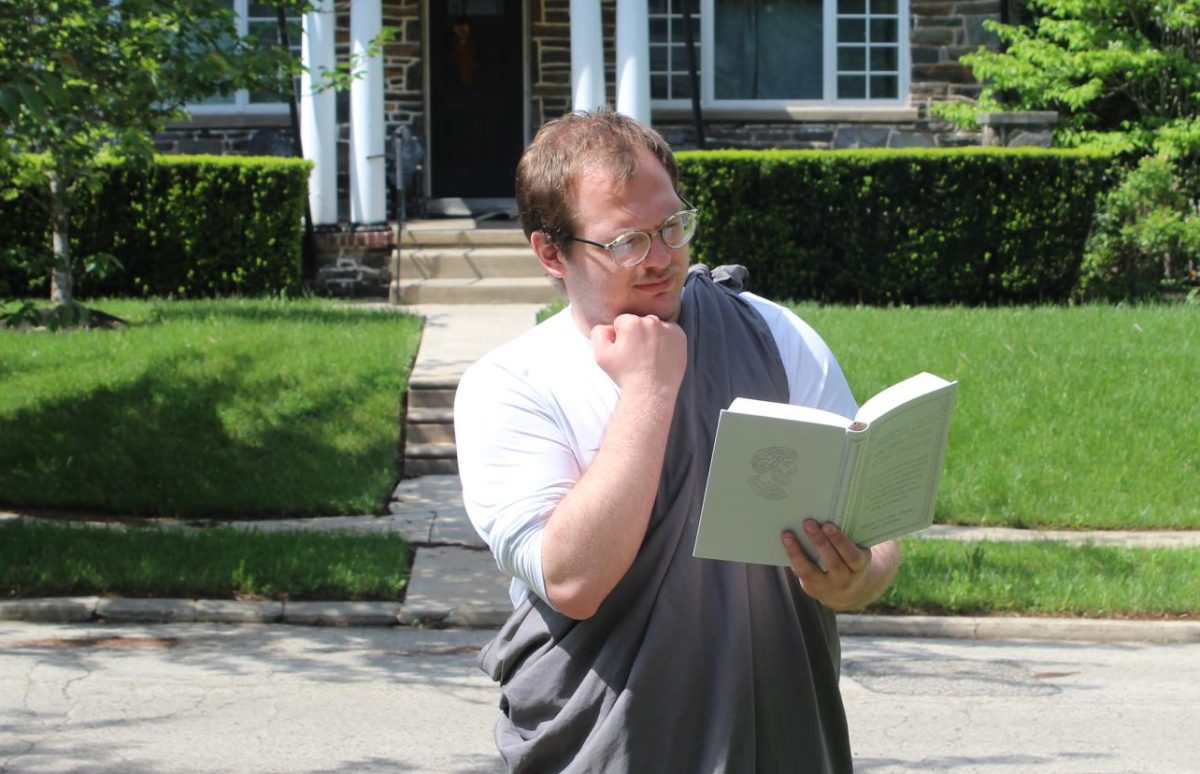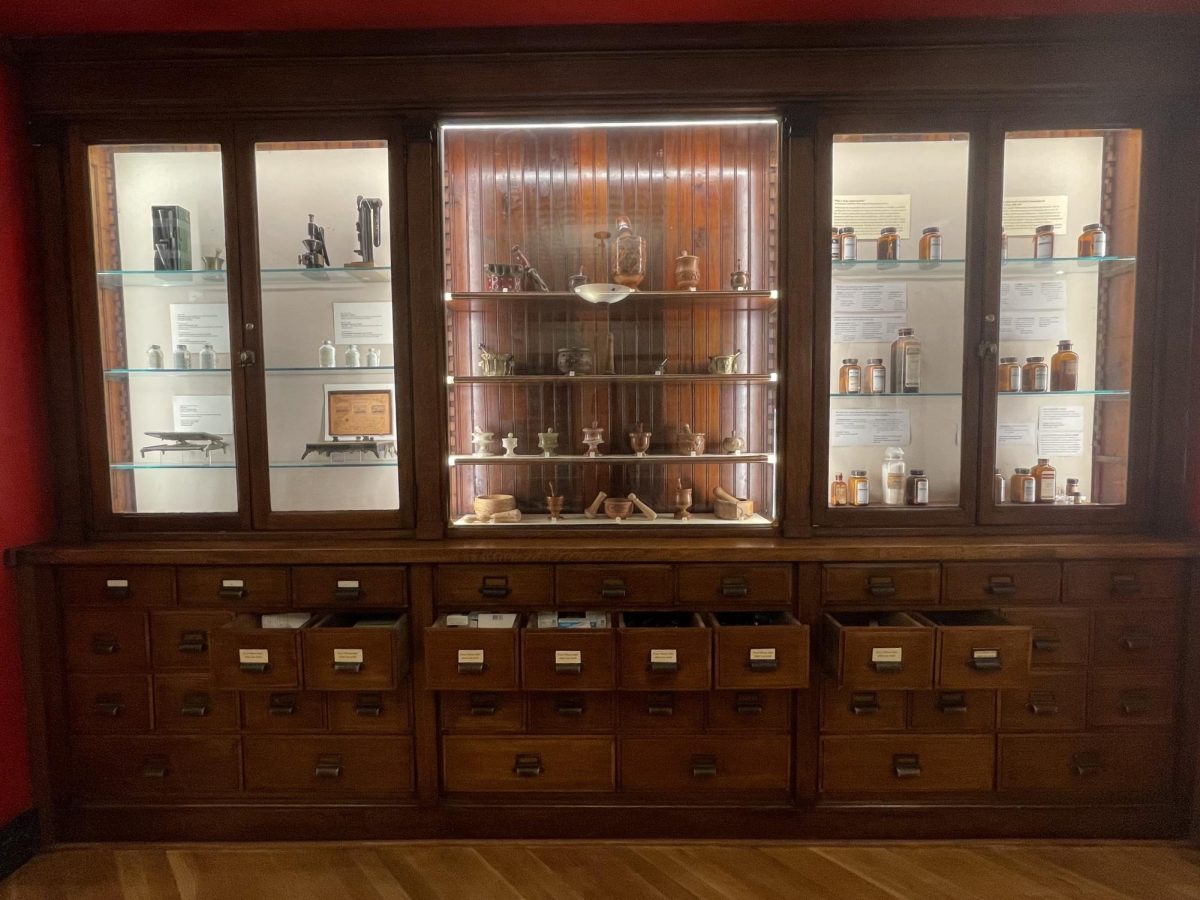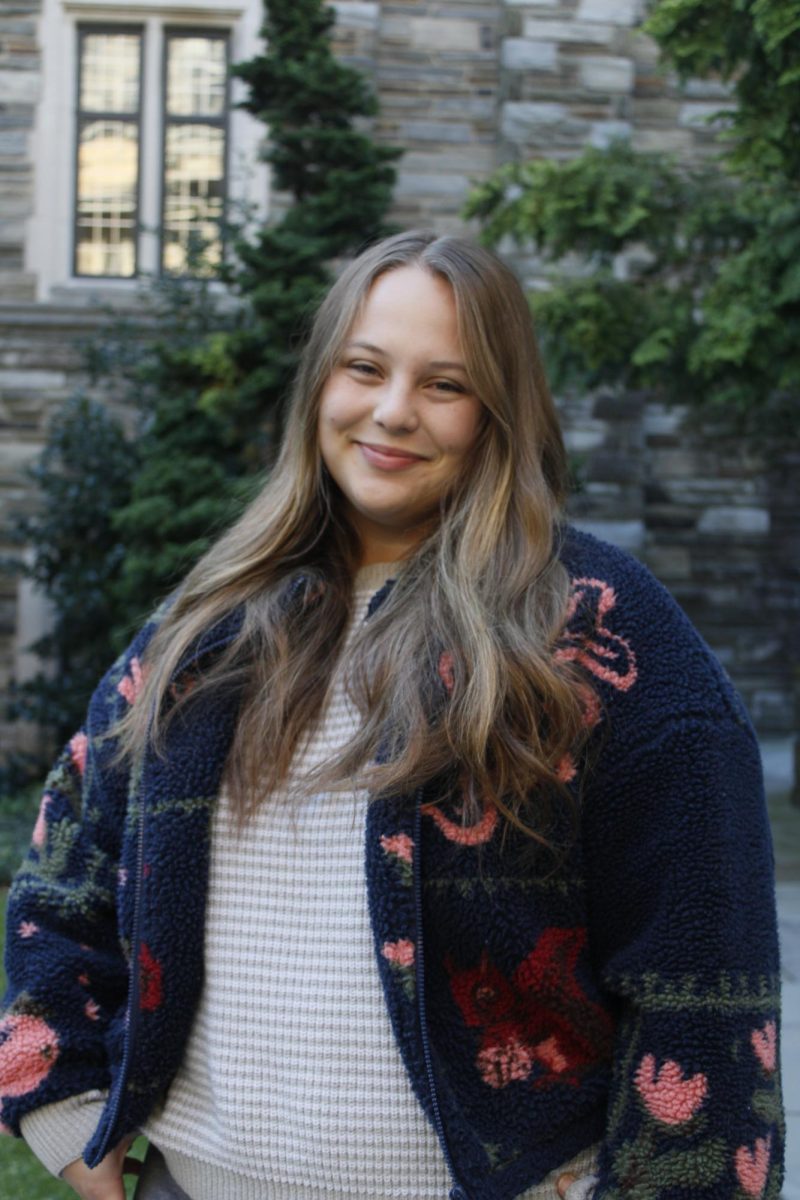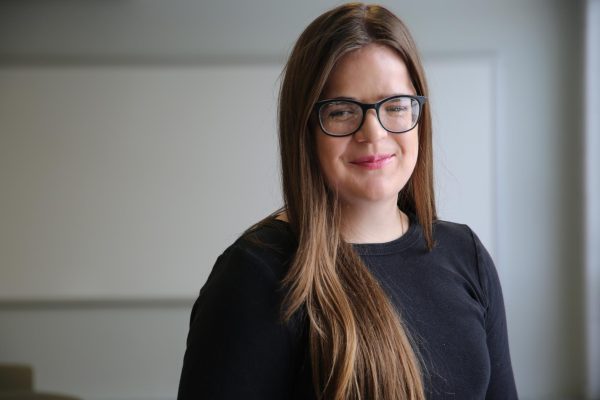After six years of inactivity, the merger between St. Joe’s and the University of Sciences brought life back to the Marvin Samson Pharmacy Museum for the History of Pharmacy.
While the museum had been in existence since 1995, understaffing in 2016 led to a period of inactivity. After the merger in 2022, members of St. Joe’s history department, library and the department of pharmacy practice undertook the process of saving what they believed was an invaluable resource of pharmacy history.
“People from these three departments came together and said, ‘We need to protect this collection. We need to inventory this collection and then also reopen this gallery and reawaken this gallery,” Emma Gunuey-Marrs, the museum’s assistant curator, said.
Behind two wooden French doors on the first floor of Griffith Hall on the University City campus, the museum is laid out to create a linear narrative. Visitors walk through the history of the Philadelphia College of Pharmacy and pharmacy compounding, told through objects in glass display cases.
The museum houses an estimated 10,000 objects, including 3,200 items listed in its inventory, though no items are currently on display due to renovations after a flood over Winter Break, Gunuey-Marrs said.
Part of saving the museum included hiring people like Gunuey-Marrs. With past experience in archival work at the Philadelphia Museum of Art, Gunuey-Marrs now manages the Marvin Samson museum’s collections, curates the gallery and leads education programs with students from the pharmacy practice and history departments.
Each day is different for Gunuey-Marrs. Some days she spends working closely with students, answering questions and installing objects in the museum, while other days she catalogues, photographs or prepares records for the website. She also regularly coordinates collaborations and schedules visits.
Collaboration, Gunuey-Marrs said, is key.
“Having this dialogue and interchange between different disciplines is so fruitful with a collection like this, where we can have artists looking at these historical objects one way, scientists looking at them another way, historians looking at it another way,” Gunuey-Marrs said. “It’s these different perspectives that allow this collection to keep being meaningful to us.”
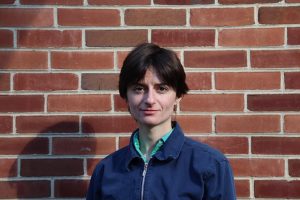
Gunuey-Marrs said she loves seeing people excited by different aspects of the collection.
“My ethos in terms of museum work in curation is, ‘We’re doing this for the community where we’re embedded,’” Gunuey-Marrs said. “I feel my job is to use the collection to engage the SJU community and the West Philadelphia community, and that’s where having collaborators like students, professors and our Artist-in-Residence is so important because it can’t just be me being like, ‘Hey, here’s a cool object.’”
Rebecca Andrade ’23, who has been a museum cataloger for the museum since February 2023, said she enjoys working with a set of incantation bowls from Babylonian times, thousands of years ago.
“I was super thrilled about that,” Andrade said. “It’s one of our oldest items that we have. It was amazing because I have never held one in real life.”
As part of her role, Andrade catalogs medicines from the early 1900s into the museum’s database and conducts research. Many older objects from local Philadelphia drugstores, which are part of the museum’s collection, lack manufacturer labels, requiring Andrade to do independent research to catalog the medicine.
Along with Gunuey-Marrs, Andrade helps interns and work-study students catalogue objects into the museum’s database. Students also assist in photographing, cataloging, or researching.
Anastasiya Stolyarchuk ’24, PharmD ’26, has been doing an independent work-study at the museum since September 2024. Stolyarchuk, who started as a volunteer and is now a paid employee, focuses on antibiotics. Coming in once a week, Stolyarchuk catalogs antibiotics by measurements, object ID numbers and descriptions of the item.
By the end of the spring semester, Stolyarchuk is hoping to create a display for the museum.
Stolyarchuck said she loves coming to the museum because of how invested Gunuey-Marrs is in helping with students’ research.
“I go off on my little interesting tangents, like talking about a drug I found, and she’s really engaged in it,” Stolyarchuk said. “I really really like that she is engaged in what you are researching into.”
Gunuey-Marrs is currently collaborating with visual artist Teresa Cervantes, who has been researching for the museum since its reopening in 2022 and is the museum’s current Artist-in-Residence, on a new exhibition, set to open in August. The exhibition, “Indications: Teresa Cervantes,” aims to explore the concept of community and how individuals engage with wellness industries as a means of connection.
“These different perspectives allow this collection to keep being meaningful to us,” Gunuey-Marrs said.
The museum is currently closed for renovations, but will reopen in August with the “Indications: Teresa Cervantes” exhibition. When operating, the museum is open to the public by appointment Thursday and Friday 10 a.m. to 5:30 p.m., and open to the St. Joe’s community Monday through Fridaty 9 a.m to 5 p.m.

